<原來如此, 好有"品味" 大堆頭設計喔: 香港地地小人多人人"缺宅男女"怨聲載道, 都可以玩到0禁, 神伏. 超有 MINIMALISM殿堂始祖級設計 FEEL 呢 ... >


Fallingwater house by Frank Lloyd Wright
Fallingwater has provided enjoyment to many people over the years; as a stimulating weekend retreat for the Kaufmann family and their friends, as a source of pride to the architect and his associates, and now - cared for by the Western Pennsylvania Conservancy - as an exceptional experience for visitors from near and far....
Fallingwater opened a new chapter in American architecture, and is perhaps rightly considered Wright's greatest work, for he was first and foremost an architect of houses. In its careful yet startling integration of stone walls anchored to the bedrock and modern reinforced concrete terraces hovering in space, Connors states that Fallingwater may be understood as 'one of the great critiques of the modern movement in architecture, and simultaneously one of its masterpieces'. Yet we cannot help feeling that there is more to this design than even that; this is an architecture that seizes our imagination, letting us see space and habitation in ways that seem new, but which we simultaneously feel to be ancient, somehow fundamental to our human nature. 2
Fallingwater is famous; from all over the world many thousands of visitors come each year to its remote site. What draws them? - a most unusual house in an exceptionally picturesque setting and something more, a reputation.
In 1936, even before it was finished, knowledgeable people talked about this new work of Frank Lloyd Wright....
After a time a consensus arose that Wright had created a masterwork that appealed not only to professionals but to the public generally. Fallingwater was not much like the earlier architecture that had made Wright famous; it was just as distant from the avant-garde styles of the 1930s, and surely like any popular "dream house." Yet now that Fallingwater has been tested by half-a-century of the widest exposure, one can say that it marks a high point in Wright's vast oeuvre, in American architecture, in the architecture of this century, and possibly in all architecture.
When Wright came to the site he appreciated the powerful sound of the falls, the vitality of the young forest, the dramatic rock ledges and boulders; these were elements to be interwoven with the serenely soaring spaces of his structure. But Wright's insight penetrated more deeply. He understood that people were creatures of nature, hence an architecture which conformed to nature would conform to what was basic in people. For example, although all of Fallingwater is opened by broad bands of windows, people inside are sheltered as in a deep cave, secure in the sense of hill behind them. Their attention is directed toward the outside by low ceilings; no lordly hall sets the tone but, instead, the luminous textures of the woodland, rhythmically enframed. The materials of the structure blend with the colorings of rocks and trees, while occasional accents are provided by bright furnishings, like wildflowers or birds outside. The paths within the house, stairs and passages, meander without formality or urgency, and the house hardly has a main entrance; there are many ways in and out. Sociability and privacy are both available, as are the comforts of home and the adventures of the seasons. So people are cosseted in to relaxing, into exploring the enjoyment of a life refreshed in nature. Visitors, too, in due measure experience Wright's architecture as an expansion of living.

They are on one floor and their intersection is in the shape of the letter L, which allows them to be built on plots of irregular shape. Designed for people of middle class and provided they have servants. The kitchen is usually small and adjacent to the dining room. Place for eating in the living room goes smoothly and helps to better communication. The bedrooms are of limited size. A typical example of such a house is home to “Honeycomb House” by Paul and Jean Hanna in California. It is designed as contiguous hexagons. North of the Wright houses are at the heart of the concept of low-American suburbs. Frank Lloyd Wright is the author of the 1100 draft houses, churches, bridges, schools, offices, museums, to date there are 409 of the works of the great architect.
FB Page



香港專業教育學院建造工程系主任陳子明指出,若有專業人士蓄意遮掩秘道,隱藏僭建物並瞞過檢查,等於欺騙屋宇署,屬違反《建築物條例》,若 業主曾指示專業人士這樣做,一樣屬違法。大律師陸偉雄表示,若施工期間興建沒有獲得批准的結構,然後呈交「假圖則」給屋宇署,或違反虛假文書罪;若業主知 情,則觸犯串謀詐騙罪。
面積2250呎 兩屋秘道通地庫
本報日前獲得一份2007年裝修大地庫的施工圖則,此圖則昨天終獲工程人員確認,顯示唐宅非法地庫面積約為2250方呎。圖則顯示,除了 5A屋有一條秘道通往地庫之外,7號屋也有一條通往地庫的秘道,而且十分隱蔽,只能經停車場進入;而該入口長期停泊一部汽車,入口因而被遮掩。
唐英年昨日表示,他委託的專業人士已與屋宇署聯絡,讓屋宇署今日進入約道大宅視察僭建物,若發現與原圖則有出入,會立即清拆。但他聲稱,不 記得僭建物何時興建,又拒絕回應工程監工者是否他的太太,只承認當日是由「家人」監工。對於《爽報》昨日引述一幅2003年建築草圖,指7號地底僭建地庫 有戲院及日式浴室,唐英年公開指該圖則與事實不符。
唐:不記得僭建物何時興建
不過,根據本報取得的2007年圖則,唐英年的回答似有取巧之嫌,因7號地庫雖無私人戲院及日式浴室,但私人戲院變成多用途房,日式浴室則改為髮廊,大地庫還有酒窖、品酒室、健身室,間隔之多,不似唐英年說的「工人掘深咗」。
屋宇署昨日強調,2007年1月24日,曾派員到上址視察,確認剛建成的房屋並無違法建築圖則後,於2007年2月發出入伙紙。根據圖則,上址應是一幢三層高的洋房,並無儲物用地庫;地面層的建築圖,亦不見任何樓梯通往地底。
不過,本報取得的2007年圖則清楚顯示,泳池底預留兩個方洞,作為日後地庫「品酒室」的天窗。偌大的僭建地庫,樓底高達12呎,同時,單是酒窖面積約400多方呎,是港人一個小家庭居所面積。品酒室面積亦達400方呎,多用途室及健身室分別約300方呎。
地政總署﹕諮詢法律意見
由於約道7號屋已用盡0.6倍的地積比率,不可能再建地庫,是次有人僭建大地庫2250方呎,按約道目前每呎最新成交價3萬元計算,有人變相免費取得一個價值近7000萬元的大地庫。
對於有人涉嫌僭建地庫後,超過法定地積比率及沒有補地價,地政總署發言人表示,屬下的九龍東地政處會研究,包括諮詢法律意見。
立法會議員涂謹申日前表示,若有證人挺身指證有人故意欺騙屋宇署,以騙取入伙紙,則串謀詐騙罪可能成立。
(明報獨家)
《選戰醜聞》










【本報訊】廿多萬元一塊玻璃做地板,放上去後不滿意,全塊玻璃打碎安裝一塊新的。池底設有玻璃、從地庫看穿的泳池,原來可以直通屋內的廚房。地庫除了有酒窖和品酒室,還設有專業洗頭椅,唐英年與家人用五年打造了一個極盡奢華的地下王宮,很難想像他真能了解小市民的生活。
據悉,約道七號的僭建王宮○六年動工、一一年竣工,工程歷時五年,所費不菲,唐英年和家人在施工期間曾經多次到上址視察,故他推說自己不知情,且地 庫是一個堆放雜物的地方,實是一派謊言。在昨日曝光的圖則清楚可見,僭建而來的地下酒窖佔地超過四百平方呎,足以擺放數千支酒。消息指,地下酒窖內三部冷 氣機廿四小時運作,以控制溫度和濕度,原理等同一個超大型雪櫃。
除酒窖外,地下王宮內設有的多用途私人影院,設備和器材全屬一流貨色,連用以遮光的百葉簾,也是用高檔飛機木造。深諳享受之道的唐家上下,更特地在地下王宮內安裝了一般只會在髮型屋發現的「洗頭椅」,供女賓客洗頭打扮。
據了解,大宅的泳池下層是品酒室,在地庫品酒,可從天花板的玻璃窺見泳池內泳者的動態。兩塊分別兩呎半乘四呎以及兩呎半乘三呎的玻璃,安裝所需技巧極高,唐英年家人專程邀請泰國技術人員到港施工。消息人士說,「香港冇人識做。」
【本報訊】唐英年聲稱自己一直居於九龍塘約道 5A大宅,對約道 7號大宅僭建的地下皇宮毫不知情。不過,唐家大宅內的史納莎,卻「出賣」主人,再次證明了兩間屋相連。


有 報 章 刊 登 據 稱 唐 僭 建 地 牢 草 圖
行 政 長 官 參 選 人 唐 英 年 涉 嫌 僭 建 事 件 再 有 新 進 展 。 有 報 章 刊 登 一 張 據 稱 是 僭 建 地 牢 的 草 圖 , 指 面 積 有 二 千 多 呎 , 內 有 酒 窖 和 影 院 。 下 午 出 版 的 《 爽 報 》 在 頭 版 刊 登 一 幅 據 稱 是 九 龍 塘 約 道 7 號 大 宅 地 牢 的 圖 則 草 圖 。 報 道 指 有 二 千 多 呎 , 比 大 宅 的 地 面 面 積 更 大 。 根 據 草 圖 內 , 地 牢 有 酒 窖 、 品 酒 室 、 多 用 途 影 院 、 健 身 房 和 日 式 浴 室 等 , 唐 英 年 日 前 承 認 停 車 場 後 面 挖 深 了 作 雜 物 室 , 又 指 並 無 量 度 過 有 多 大 。 唐 英 年 競 選 辦 暫 時 未 回 應 《 爽 報 》 報 道 , 而 已 交 了 提 名 票 予 唐 的 自 由 黨 指 唐 英 年 連 日 解 釋 牽 強 , 黨 內 會 重 新 檢 視 投 票 立 場 。
video
http://cablenews.i-cable.com/webapps/news_video/index.php?news_id=377863


唐宅現貌與當年遞交予屋宇署的圖則大有出入,根據《建築物條例》,未經屋宇署批准進行建築工程屬嚴重罪行,最高刑罰為監禁兩年及罰 款四十萬元;若有關工程有可能導致任何人受傷或任何財產損毀,亦屬違法,一經定罪,可判監禁三年及罰款一百萬元。若建築物室內面積超出地積比上限,亦可能 觸犯《城市規劃條例》,首次定罪可被罰款五十萬元,重犯罰則可提高至一百萬元。
大律師陸偉雄分析,若有人呈交「假圖則」瞞騙屋宇署,並進行大規模僭建,可能涉及使用虛假文書及串謀詐騙等嚴重罪行。他又說,業主 或相關人士可能以「全權交由建築師負責」辯稱不知情,但理由相當牽強,法庭未必會接納。若有人就事件報案,警方可即時介入調查展開搜證工作,並從相關人士 包括建築師、工程師的口供,了解有多少人知情及涉案。
唐英年及郭妤淺被指在約道七號大宅僭建的地下室,面積達二千四百呎,若以○六年大宅入則興建之時計算,當時九龍塘補地價每呎為五千元,推算大宅現時需要向政府補地價逾一千二百萬元,若以現價計算,金額更會倍增。
The legacy of Frank Lloyd Wright

Fallingwater house by Frank Lloyd Wright
Frank Lloyd Wright called the greatest American architect of all time, and his modern architecture buildings are recognized as the most important architectural works of the past 100 years. It marks the beginning of organic architecture as revealed properties of natural materials and their relationship with nature. Buildings designed by him to complement the environment, they are not perceived as a closed space, but as a place in harmony with nature harmoniously.
Fallingwater house by Frank Lloyd Wright

Fallingwater house by Frank Lloyd Wright
Fallingwater has provided enjoyment to many people over the years; as a stimulating weekend retreat for the Kaufmann family and their friends, as a source of pride to the architect and his associates, and now - cared for by the Western Pennsylvania Conservancy - as an exceptional experience for visitors from near and far....
Fallingwater opened a new chapter in American architecture, and is perhaps rightly considered Wright's greatest work, for he was first and foremost an architect of houses. In its careful yet startling integration of stone walls anchored to the bedrock and modern reinforced concrete terraces hovering in space, Connors states that Fallingwater may be understood as 'one of the great critiques of the modern movement in architecture, and simultaneously one of its masterpieces'. Yet we cannot help feeling that there is more to this design than even that; this is an architecture that seizes our imagination, letting us see space and habitation in ways that seem new, but which we simultaneously feel to be ancient, somehow fundamental to our human nature. 2
Fallingwater is famous; from all over the world many thousands of visitors come each year to its remote site. What draws them? - a most unusual house in an exceptionally picturesque setting and something more, a reputation.
In 1936, even before it was finished, knowledgeable people talked about this new work of Frank Lloyd Wright....
After a time a consensus arose that Wright had created a masterwork that appealed not only to professionals but to the public generally. Fallingwater was not much like the earlier architecture that had made Wright famous; it was just as distant from the avant-garde styles of the 1930s, and surely like any popular "dream house." Yet now that Fallingwater has been tested by half-a-century of the widest exposure, one can say that it marks a high point in Wright's vast oeuvre, in American architecture, in the architecture of this century, and possibly in all architecture.
When Wright came to the site he appreciated the powerful sound of the falls, the vitality of the young forest, the dramatic rock ledges and boulders; these were elements to be interwoven with the serenely soaring spaces of his structure. But Wright's insight penetrated more deeply. He understood that people were creatures of nature, hence an architecture which conformed to nature would conform to what was basic in people. For example, although all of Fallingwater is opened by broad bands of windows, people inside are sheltered as in a deep cave, secure in the sense of hill behind them. Their attention is directed toward the outside by low ceilings; no lordly hall sets the tone but, instead, the luminous textures of the woodland, rhythmically enframed. The materials of the structure blend with the colorings of rocks and trees, while occasional accents are provided by bright furnishings, like wildflowers or birds outside. The paths within the house, stairs and passages, meander without formality or urgency, and the house hardly has a main entrance; there are many ways in and out. Sociability and privacy are both available, as are the comforts of home and the adventures of the seasons. So people are cosseted in to relaxing, into exploring the enjoyment of a life refreshed in nature. Visitors, too, in due measure experience Wright's architecture as an expansion of living.
People are placed in maximum close contact with nature, with perhaps the most popular work of Frank Lloyd Wright “house over the waterfall ” in Pennsylvania. The architect left part of the rock in the interior and use it in the interior. In the construction used stone and wood. The interior design is distinguished by comfort and spaciousness. Genius architect creates a unique style. He believes that good design makes people more attentive to the outside world. Frank Lloyd Wright prairie style developed in the architecture.
Prairie house by Frank Lloyd Wright
Characteristic of prairie houses roofs with slight sheds, low proportions, wide chimneys. For their construction using bricks, wood and mortar. The fireplace in the center of the house combines space. Wright pays great attention to interior design and furniture alone. It includes the general design of the building built libraries, sofas, sideboards. Style “Yuson” covers the work of Wright in the 30s of last century. Then the architect begins to use ready-building elements and reinforced concrete structures. It develops family houses called North American. They are compact, economical, practical and technological. Through these principles continues Wright prairie houses.
One floor house architecture by Frank Lloyd Wright

One floor house architecture by Frank Lloyd Wright
FB Page
我相信有十萬人唔想唐英年做特首!

唐英年地下僭建精選圖輯大全
 |
| 科學大發現!小明在一個地洞內發現了一種沒有肩膊沒有腰骨的軟體 (見圖),有誰可以告訴小明他的學名是甚麽嗎? |


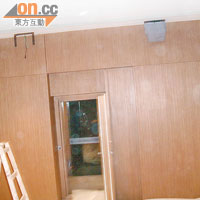
|
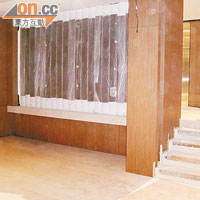
|
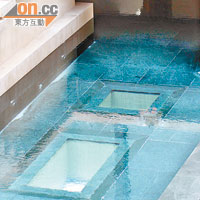
|
沒膊頭的男主角肅穆零笑容 道歉又卸膊
可憐撐夫女主角護夫淚求饒「佢係好人」
唐兒代父上陣被包圍
唐家約道大宅昨日有逾百傳媒守候,唐嘉盛(下圖)昨午返抵大宅時被大批記者包圍,幾經擾攘才返抵家門。李家皓攝擺老婆上枱
特首參選人唐英年唔係男人!屋宇署到九龍塘約道唐英年大宅搜證四小時,證實
本報獨家披露的二千四百呎「地下王宮」照片完全真確,唐英年大話連篇,誠信破產。唐英年在走投無路下,將日前高呼的「男人要有膊頭」原則拋諸腦後,竟將瘋
狂僭建及不斷講大話的責任和罪行,全部推給枕邊人郭妤淺,並要太太當場向傳媒灑淚致歉,為自己拆彈孭鑊,堅拒退選特首。連同之前自認的「感情缺失」及疑似
私生子醜聞,網民直斥唐英年厚顏無恥,擺老婆上枱,勢令到全港掀起「反唐風暴」
正當大家以為唐英年會一力承擔責任,宣布退選以示自己「有膊頭」時,唐英年卻來個反高潮,一開始發言已將自己與僭建大宅「切割」, 強調約道七號的業主是太太,僭建地牢亦是太太主意。至於他為何不知情,他竟以自己的「感情缺失」做藉口,指「當時由於處於婚姻及感情低潮」,故沒有過問太 太,企圖用一單醜聞遮掩另一單醜聞。
記者之後再多次質問他的「挖深咗」、「雜物房」言論是否「講大話」?唐英年仍兩度堅稱自己「所講嘅全部係事實」,否認有所隱瞞,並 口口聲聲表示會「一力承擔」。問及會否以主動退選向天下謝罪時,唐英年卻厚顏地要求怒火中燒的香港市民再給予他一次機會,理由同樣十分荒謬:「因為我嘅政 綱係相當好,我亦一心為港人服務,懇請市民畀我一個機會去服務市民。」
據本報翻查資料發現,唐英年大宅於二○一○年前,仍由他與太太共同持有,但到一○年卻突然將業權全數轉讓唐太,顯示他當年已處心積慮,將僭建責任推卸予枕邊人,令自己毋須負責。
全國政協委員劉夢熊狠批唐英年將所有責任推卸予太太「係卸膊同縮骨,冇資格做特首」。他形容若再給機會予唐英年改過,是對七百萬市民不負責任。「佢同老婆唔係離婚,唔係分居,仲係一齊住,太太喺隔籬大興土木,僭建地下王宮,佢會完全唔知?」
中聯辦主任彭清華昨晚拒絕評論事件。但中聯辦副主任郭莉則表示,不清楚唐英年的僭建事件,但認為誠信對每一個人也很重要,至於唐的誠信會否影響管治,她則說要「由選民決定」。
約道七號裝修經年還未入伙,知情人士解釋,唐太要求十分高,高到挑剔的程度,工人每次都要先用普通木做模型,裝妥後讓她過目,待她滿意效果,才拆走普通木再重新裝上靚木,否則她會與設計師開會討論改設計,然後又改圖重新做過,如是者反反覆覆。
對於地庫是否○七年取得入伙紙後才加建的關鍵問題,知情人士強調:「地庫係連埋間屋一齊起,通往地庫的樓梯有道趟門,屋宇署人員來驗收時,趟門鎖上,並無用假牆掩飾,不明屋宇署人員為何冇發現。」
知情人士又透露,約道七號室內設計師陳樂文原為建築師,與大樓建築師、負責向屋宇署入則的認可人士何仲怡,曾於九十年代同任職於一間建築師樓,可說是同門師兄弟,兩人自立門戶後亦互相關照,經常一齊合作接生意。
【明 報專訊】特首參選人唐英年在九龍塘約道7號大宅的裝修圖則曝光,根據本報獨家取得7號屋的2007年裝修圖則,顯示僭建並非早前唐英年所說的「工人掘深 咗」,而是一個經過精心設計、面積約2250平方呎的隱密豪華大型地庫。圖則顯示,原來唐英年聲稱自住的5A號屋,有一條秘密通道直達毗鄰的7號屋大地 庫。唐英年昨晚公開稱,今日將容許屋宇署入屋檢查。
不願披露身分的唐宅工程人員表示,有人預先建成大地庫後,再遮掩兩條通往大地庫的通道,然後瞞過屋宇署檢查,2007年2月取得入伙紙後打開通道,裝修大地庫。
稱感情缺失 婚姻低潮做鴕鳥
本報昨日獨家披露多張圖片,證實唐英年於九龍塘約道七號大宅,僭建了二千四百呎的奢華王宮,私人影院、酒窖、品酒室應有盡有,亦即唐英 年連日來聲稱的「挖深咗」及「雜物房」之說全屬大話。唐英年昨日傍晚原定會出席的金融業聯合新春酒會,但臨時取消,龜縮整日直到晚上八時半,才於金鐘競選 辦外拖着太太郭妤淺面對記者。正當大家以為唐英年會一力承擔責任,宣布退選以示自己「有膊頭」時,唐英年卻來個反高潮,一開始發言已將自己與僭建大宅「切割」, 強調約道七號的業主是太太,僭建地牢亦是太太主意。至於他為何不知情,他竟以自己的「感情缺失」做藉口,指「當時由於處於婚姻及感情低潮」,故沒有過問太 太,企圖用一單醜聞遮掩另一單醜聞。
自誇政綱相當好 向市民求饒
唐英年不但將僭建責任推卸給自己最親的人,就連連日來自己大話連篇,誠信破產,他竟然亦可卸責給太太,再以荒謬原因解釋一切:「過去幾日自己嘅不善,講得比較含糊,係因為心入面有矛盾,一方面想交代,另一方面唔想牽涉我太太。」記者之後再多次質問他的「挖深咗」、「雜物房」言論是否「講大話」?唐英年仍兩度堅稱自己「所講嘅全部係事實」,否認有所隱瞞,並 口口聲聲表示會「一力承擔」。問及會否以主動退選向天下謝罪時,唐英年卻厚顏地要求怒火中燒的香港市民再給予他一次機會,理由同樣十分荒謬:「因為我嘅政 綱係相當好,我亦一心為港人服務,懇請市民畀我一個機會去服務市民。」
大宅年前轉名 處心積慮卸責
唐英年卸膊縮骨,連累平時笑容滿面的唐太,也因含屈而淚灑當場,不停地一邊哽咽,一邊自責:「係我一手搞出嚟!」又指自己會繼續一心一意支持丈夫出任特首。問及為何繼續支持這位又有婚外情又「冇膊頭」的男人,唐太的解釋亦相當牽強:「佢係一個好人,唔可以當佢係壞人。」據本報翻查資料發現,唐英年大宅於二○一○年前,仍由他與太太共同持有,但到一○年卻突然將業權全數轉讓唐太,顯示他當年已處心積慮,將僭建責任推卸予枕邊人,令自己毋須負責。
全國政協委員劉夢熊狠批唐英年將所有責任推卸予太太「係卸膊同縮骨,冇資格做特首」。他形容若再給機會予唐英年改過,是對七百萬市民不負責任。「佢同老婆唔係離婚,唔係分居,仲係一齊住,太太喺隔籬大興土木,僭建地下王宮,佢會完全唔知?」
中聯辦主任彭清華昨晚拒絕評論事件。但中聯辦副主任郭莉則表示,不清楚唐英年的僭建事件,但認為誠信對每一個人也很重要,至於唐的誠信會否影響管治,她則說要「由選民決定」。
唐宮五年豪裝半億元
【本報訊】雖然特首參選人唐英年企圖將僭建責任推卸到太太身上,但知情人士
繼續踢爆唐英年講大話,力證在施工期間,唐英年經常到地庫視察工程進度,與設計師一同開會,並指地庫是在建屋時一併興建,並非後來加建,只是屋宇署人員驗
樓時疏忽懶散,才未有發現。知情人士又說,「地下王宮」裝修期長達五年之久,單是裝修費已達半億。
知情人士昨日再向本報爆料,指唐太幾乎每日都到地庫視察工程進度,而唐英年則多數在星期六、日才出現,他亦有與設計師開會,討論大宅裝修情況。約道七號豪裝後,將是唐英年和太太住所,而五號A則留給其他家人居住。約道七號裝修經年還未入伙,知情人士解釋,唐太要求十分高,高到挑剔的程度,工人每次都要先用普通木做模型,裝妥後讓她過目,待她滿意效果,才拆走普通木再重新裝上靚木,否則她會與設計師開會討論改設計,然後又改圖重新做過,如是者反反覆覆。
屋宇署漠視惹質疑
知情人士又說,「地下王宮」用料不靚不用,雖然設計走簡約路線,並非金碧輝煌,但工夫甚多,裝修近乎完美,單是材料費便是幾千萬元,當中包括整套廚櫃總值一百萬元,馬桶也要一萬元,加上近十名工人五年來人工約千萬元,合共五千萬元,可以買一個豪宅單位了。對於地庫是否○七年取得入伙紙後才加建的關鍵問題,知情人士強調:「地庫係連埋間屋一齊起,通往地庫的樓梯有道趟門,屋宇署人員來驗收時,趟門鎖上,並無用假牆掩飾,不明屋宇署人員為何冇發現。」
知情人士又透露,約道七號室內設計師陳樂文原為建築師,與大樓建築師、負責向屋宇署入則的認可人士何仲怡,曾於九十年代同任職於一間建築師樓,可說是同門師兄弟,兩人自立門戶後亦互相關照,經常一齊合作接生意。
【明 報專訊】特首參選人唐英年在九龍塘約道7號大宅的裝修圖則曝光,根據本報獨家取得7號屋的2007年裝修圖則,顯示僭建並非早前唐英年所說的「工人掘深 咗」,而是一個經過精心設計、面積約2250平方呎的隱密豪華大型地庫。圖則顯示,原來唐英年聲稱自住的5A號屋,有一條秘密通道直達毗鄰的7號屋大地 庫。唐英年昨晚公開稱,今日將容許屋宇署入屋檢查。
香港專業教育學院建造工程系主任陳子明指出,若有專業人士蓄意遮掩秘道,隱藏僭建物並瞞過檢查,等於欺騙屋宇署,屬違反《建築物條例》,若 業主曾指示專業人士這樣做,一樣屬違法。大律師陸偉雄表示,若施工期間興建沒有獲得批准的結構,然後呈交「假圖則」給屋宇署,或違反虛假文書罪;若業主知 情,則觸犯串謀詐騙罪。
面積2250呎 兩屋秘道通地庫
本報日前獲得一份2007年裝修大地庫的施工圖則,此圖則昨天終獲工程人員確認,顯示唐宅非法地庫面積約為2250方呎。圖則顯示,除了 5A屋有一條秘道通往地庫之外,7號屋也有一條通往地庫的秘道,而且十分隱蔽,只能經停車場進入;而該入口長期停泊一部汽車,入口因而被遮掩。
唐英年昨日表示,他委託的專業人士已與屋宇署聯絡,讓屋宇署今日進入約道大宅視察僭建物,若發現與原圖則有出入,會立即清拆。但他聲稱,不 記得僭建物何時興建,又拒絕回應工程監工者是否他的太太,只承認當日是由「家人」監工。對於《爽報》昨日引述一幅2003年建築草圖,指7號地底僭建地庫 有戲院及日式浴室,唐英年公開指該圖則與事實不符。
唐:不記得僭建物何時興建
不過,根據本報取得的2007年圖則,唐英年的回答似有取巧之嫌,因7號地庫雖無私人戲院及日式浴室,但私人戲院變成多用途房,日式浴室則改為髮廊,大地庫還有酒窖、品酒室、健身室,間隔之多,不似唐英年說的「工人掘深咗」。
屋宇署昨日強調,2007年1月24日,曾派員到上址視察,確認剛建成的房屋並無違法建築圖則後,於2007年2月發出入伙紙。根據圖則,上址應是一幢三層高的洋房,並無儲物用地庫;地面層的建築圖,亦不見任何樓梯通往地底。
不過,本報取得的2007年圖則清楚顯示,泳池底預留兩個方洞,作為日後地庫「品酒室」的天窗。偌大的僭建地庫,樓底高達12呎,同時,單是酒窖面積約400多方呎,是港人一個小家庭居所面積。品酒室面積亦達400方呎,多用途室及健身室分別約300方呎。
地政總署﹕諮詢法律意見
由於約道7號屋已用盡0.6倍的地積比率,不可能再建地庫,是次有人僭建大地庫2250方呎,按約道目前每呎最新成交價3萬元計算,有人變相免費取得一個價值近7000萬元的大地庫。
對於有人涉嫌僭建地庫後,超過法定地積比率及沒有補地價,地政總署發言人表示,屬下的九龍東地政處會研究,包括諮詢法律意見。
立法會議員涂謹申日前表示,若有證人挺身指證有人故意欺騙屋宇署,以騙取入伙紙,則串謀詐騙罪可能成立。
(明報獨家)
地下皇宮曝光 酒池肉林最爽
《選戰醜聞》
【本報訊】連日來,唐英年對其九龍塘約道大宅僭建地庫由堅拒承認到支吾以對,大話連篇。本報獲得一份約道
7號地庫草圖,更顯示僭建地庫如「地下皇宮」,面積或達
2,400平方呎,酒窖外更有品酒室、多用途影院、日式風呂等,與唐推說的「挖深咗」和放雜物有天壤之別。存心私建「酒池肉林」令唐英年誠信破產,特首之
路再添阻滯。
本周一被傳媒揭發在九龍塘
7號大宅僭建地庫後,唐英年一直含糊其辭,首日辯稱「工人挖深咗,建成一間雜物房」,堅持不知地庫面積,又推稱自住的約道
5A沒有地下酒窖。翌日被本報踢爆僭建的地庫或達千呎後,唐英年仍堅拒透露詳情,例如是否在其任職政府期間僭建,只肯就未有即時跟進僭建致歉。
甚至日式風呂,而唐英年近日所說「挖深咗」的雜物房,在 2,400平方呎的「地下皇宮」只佔小部份。地庫面積更可能遠超大宅每層的約 1,000平方呎。
唐 英年誠信破產之餘,更惹來刑事嫌疑,因有關設計原圖顯示,唐英年在地牢興建的地下皇宮,有秘道通往地下低層( LG);但大宅建築師何仲怡 06年 9月向屋宇署呈交的圖則顯示,地下低層原有秘道位置被設計成一個「轉車台」。兩圖的差異,再次引人關注事件是否涉有人呈交假圖則。
《爽報》昨日曾向唐英年競選辦查詢, 7號大宅是否如原設計草圖僭建,惟一直未有回覆。傍晚近 5時公開派發的《爽報》晚報以頭版報道事件後,唐辦也未有作出回應。至唐英年晚上近 8時半出席公開活動後,才親自開腔回應。
唐英年堅稱:「印象中冇睇過幅草圖。」又說:「嗰間屋搞咗十年,都未搬入去。」對僭建面積,則「唔知幾大」。被問到地庫有否浴室和私人影院,他說「與事實不符」,重申那裏「只係用作儲物嘅空屋」,但不肯回應僭建工程是否由其太太監工。
前天登門造訪但被拒的屋宇署人員今天會入唐宅檢視,唐英年重申已委託專人處理僭建問題,又說會考慮稍後開放大宅予傳媒視察。
唐 英年誠信破產之餘,更惹來刑事嫌疑,因有關設計原圖顯示,唐英年在地牢興建的地下皇宮,有秘道通往地下低層( LG);但大宅建築師何仲怡 06年 9月向屋宇署呈交的圖則顯示,地下低層原有秘道位置被設計成一個「轉車台」。兩圖的差異,再次引人關注事件是否涉有人呈交假圖則。
《爽報》昨日曾向唐英年競選辦查詢, 7號大宅是否如原設計草圖僭建,惟一直未有回覆。傍晚近 5時公開派發的《爽報》晚報以頭版報道事件後,唐辦也未有作出回應。至唐英年晚上近 8時半出席公開活動後,才親自開腔回應。
唐英年堅稱:「印象中冇睇過幅草圖。」又說:「嗰間屋搞咗十年,都未搬入去。」對僭建面積,則「唔知幾大」。被問到地庫有否浴室和私人影院,他說「與事實不符」,重申那裏「只係用作儲物嘅空屋」,但不肯回應僭建工程是否由其太太監工。
前天登門造訪但被拒的屋宇署人員今天會入唐宅檢視,唐英年重申已委託專人處理僭建問題,又說會考慮稍後開放大宅予傳媒視察。
傳中央已棄唐保梁
唐氏「地下皇宮」曝光,震動整個唐營支持者。據了解,不少唐營支持者擔心圖則若屬實,足毀唐英年特首之路,昨午紛向唐營查詢,但不少人都未能接觸相關人士。
至傍晚,有關特首選戰的謠言滿天飛,有傳中央已棄唐保梁,另一政界人士則指,挺梁陣營傳出針對唐的「黑材料」未完全曝光,甚至短期內會再有人「爆料」。
流傳四起,動搖唐營軍心。政界更盛傳,有人昨游說唐英年退選。早前已向唐英年提交逾 60個黨內及支持者提名的自由黨,昨率先「跳船」,主席劉健儀稱提名唐不等於要支持,還要視乎其政綱及僭建問題而定。
香港的未來特首不能是大話精,民主黨及民協等政團力促唐英年退選。工黨主席李卓人更稱,唐英年不應厚顏參選:民主黨李永達也指,唐若當選,會是無誠信和無威信的政府,「如果為香港好,唔應該參選。」
至傍晚,有關特首選戰的謠言滿天飛,有傳中央已棄唐保梁,另一政界人士則指,挺梁陣營傳出針對唐的「黑材料」未完全曝光,甚至短期內會再有人「爆料」。
流傳四起,動搖唐營軍心。政界更盛傳,有人昨游說唐英年退選。早前已向唐英年提交逾 60個黨內及支持者提名的自由黨,昨率先「跳船」,主席劉健儀稱提名唐不等於要支持,還要視乎其政綱及僭建問題而定。
香港的未來特首不能是大話精,民主黨及民協等政團力促唐英年退選。工黨主席李卓人更稱,唐英年不應厚顏參選:民主黨李永達也指,唐若當選,會是無誠信和無威信的政府,「如果為香港好,唔應該參選。」
地政總署拍攝約道 7號鳥瞰圖
堅稱「冇睇過草圖」
《爽報》昨天傍晚版刊登本報獨家獲得的約道 7號地庫草圖。有知情人士爆料,早在 03年 7月、即唐英年任工商及科技局長時,其太太郭妤淺要求興建地庫,當時擬建設施包括酒窖、品酒室、多用途影院、健身室
甚至日式風呂,而唐英年近日所說「挖深咗」的雜物房,在 2,400平方呎的「地下皇宮」只佔小部份。地庫面積更可能遠超大宅每層的約 1,000平方呎。
唐 英年誠信破產之餘,更惹來刑事嫌疑,因有關設計原圖顯示,唐英年在地牢興建的地下皇宮,有秘道通往地下低層( LG);但大宅建築師何仲怡 06年 9月向屋宇署呈交的圖則顯示,地下低層原有秘道位置被設計成一個「轉車台」。兩圖的差異,再次引人關注事件是否涉有人呈交假圖則。
唐 英年誠信破產之餘,更惹來刑事嫌疑,因有關設計原圖顯示,唐英年在地牢興建的地下皇宮,有秘道通往地下低層( LG);但大宅建築師何仲怡 06年 9月向屋宇署呈交的圖則顯示,地下低層原有秘道位置被設計成一個「轉車台」。兩圖的差異,再次引人關注事件是否涉有人呈交假圖則。










設計刁鑽 髮廊洗頭椅都有
【本報訊】廿多萬元一塊玻璃做地板,放上去後不滿意,全塊玻璃打碎安裝一塊新的。池底設有玻璃、從地庫看穿的泳池,原來可以直通屋內的廚房。地庫除了有酒窖和品酒室,還設有專業洗頭椅,唐英年與家人用五年打造了一個極盡奢華的地下王宮,很難想像他真能了解小市民的生活。
據悉,約道七號的僭建王宮○六年動工、一一年竣工,工程歷時五年,所費不菲,唐英年和家人在施工期間曾經多次到上址視察,故他推說自己不知情,且地 庫是一個堆放雜物的地方,實是一派謊言。在昨日曝光的圖則清楚可見,僭建而來的地下酒窖佔地超過四百平方呎,足以擺放數千支酒。消息指,地下酒窖內三部冷 氣機廿四小時運作,以控制溫度和濕度,原理等同一個超大型雪櫃。
除酒窖外,地下王宮內設有的多用途私人影院,設備和器材全屬一流貨色,連用以遮光的百葉簾,也是用高檔飛機木造。深諳享受之道的唐家上下,更特地在地下王宮內安裝了一般只會在髮型屋發現的「洗頭椅」,供女賓客洗頭打扮。

|

|

|
「香港冇人識做」
除地下王宮外,大宅「合法」部分的設計同樣令人驚訝。據稱,大宅泳池直通室內,盡頭是廚房,泳客可以直接由泳池游進屋內,剛食過餐的人亦可以隨時跳進泳池暢泳,奢華程度相較部分五星級酒店猶有過之,令人驚訝。消息直言,有關設計十分刁鑽和新穎。
|

|

|
極豪空酒樽度位
唐英年重金打造的超豪酒窖雛形曝光,唐英年價值連城的珍藏當時雖然未入伙,
但他卻不忘將他享用完的名釀空瓶猶如展示戰利品般保留在酒窖之內。當中要數有錢也未必買到、年產量僅約五百箱(每箱十二支)的法國波爾多右岸名釀,俗稱
「李鵬」莊的Le
Pin,此酒為拍賣會搶手貨。其他令品紅愛好者流口水的名酒,還有波爾多一級酒莊Margaux(瑪歌莊),Margaux與港人熟悉的Lafite齊
名,靚年份身價動輒過萬元。
地下王宮違建築例涉詐
根據本報昨日獲得的獨家圖片及圖則,特首參選人唐英年口中「挖深咗」的地底
車庫雜物房,實為一個面積多達二千四百平方呎的超豪「地下王宮」,以呎價三萬元計,地價高達七千二百萬元,而且「王宮」內應有盡有,除了一直盛傳的巨型酒
窖和「通天」品酒室,還有超豪私人影院、日式浴室和健身室,極盡奢華。有測量師指出,唐英年大宅僭建,以及總樓面面積超出地積比率所限,兩罪同樣違反《建
築物條例》,業主可被屋宇署檢控,如能證實他蓄意提供虛假圖則騙取入伙紙,更可控以欺詐等刑事罪行。
不過,根據昨日廣傳的超豪「地下王宮」圖則,該僭建地庫面積達二千四百平方呎,即樓上單層面積的兩倍。地庫內的確如唐英年所說有一 間雜物房,但僅佔整個「王宮」的一小部分,最大的為私人影院,還有健身室、日式浴室和一個巨型廁所。地庫酒窖則佔地四百多平方呎,並直通位於泳池底天窗底 的品酒室,讓唐英年可一邊品嘗美酒,一邊抬頭觀看泳客活動,十分寫意。
有測量師指出,面積多達二千四百平方呎的地庫,要在建屋時作前期準備,後期加建相當困難,因獨立屋只需要淺層地基,若之後掘挖大面積地庫,便會影響地基結構。
屋宇署指○七年一月收到約道五號A和七號認可人士的入伙紙申請後前往視察,根據當時視察所得,該屋的建造並無違反《建築物條例》, 亦與獲批准建築圖則所示相符,遂於二月發出入伙紙,訂明該建築物為一幢兩層高作居住用途的家庭房屋,而位處該住宅地下低層的一層高有蓋泊車處及游泳池則用 作非居住用途。屋宇署前日曾派員到唐宅要求入內巡查,但最後「摸門釘」被拒入屋,該署昨已與業主委任的認可人士取得聯絡,安排今日到上址視察,詳細了解情 況,以便跟進。至於有否違反地契,地政總署表示正研究,包括諮詢法律意見。
地下王宮違建築例涉詐
根據本報昨日獲得的獨家圖片及圖則,特首參選人唐英年口中「挖深咗」的地底
車庫雜物房,實為一個面積多達二千四百平方呎的超豪「地下王宮」,以呎價三萬元計,地價高達七千二百萬元,而且「王宮」內應有盡有,除了一直盛傳的巨型酒
窖和「通天」品酒室,還有超豪私人影院、日式浴室和健身室,極盡奢華。有測量師指出,唐英年大宅僭建,以及總樓面面積超出地積比率所限,兩罪同樣違反《建
築物條例》,業主可被屋宇署檢控,如能證實他蓄意提供虛假圖則騙取入伙紙,更可控以欺詐等刑事罪行。
與屋署批准圖則天差地別
本報翻查唐英年位於九龍塘約道七號大宅的建築圖則和地契,佔地六千一百二十九平方呎,根據九龍塘分區計劃大綱圖,該處地積比率為零點六 倍,即可建總樓面面積為三千六百七十七平方呎。而根據屋宇署批准的建築圖則,七號大宅理應只有三層,沒有任何地庫,每層面積約一千平方呎,合共三千六百七 十五平方呎,即已起到盡,只差兩平方呎便超出地積比率所限。不過,根據昨日廣傳的超豪「地下王宮」圖則,該僭建地庫面積達二千四百平方呎,即樓上單層面積的兩倍。地庫內的確如唐英年所說有一 間雜物房,但僅佔整個「王宮」的一小部分,最大的為私人影院,還有健身室、日式浴室和一個巨型廁所。地庫酒窖則佔地四百多平方呎,並直通位於泳池底天窗底 的品酒室,讓唐英年可一邊品嘗美酒,一邊抬頭觀看泳客活動,十分寫意。
有測量師指出,面積多達二千四百平方呎的地庫,要在建屋時作前期準備,後期加建相當困難,因獨立屋只需要淺層地基,若之後掘挖大面積地庫,便會影響地基結構。
「有心隱瞞 驗樓時難察覺」
他又說:「有心隱瞞屋宇署的人,會將通往地庫的通道收在假牆後,之後才拆牆開通,屋宇署人員驗樓時難以察覺。」屋宇署指○七年一月收到約道五號A和七號認可人士的入伙紙申請後前往視察,根據當時視察所得,該屋的建造並無違反《建築物條例》, 亦與獲批准建築圖則所示相符,遂於二月發出入伙紙,訂明該建築物為一幢兩層高作居住用途的家庭房屋,而位處該住宅地下低層的一層高有蓋泊車處及游泳池則用 作非居住用途。屋宇署前日曾派員到唐宅要求入內巡查,但最後「摸門釘」被拒入屋,該署昨已與業主委任的認可人士取得聯絡,安排今日到上址視察,詳細了解情 況,以便跟進。至於有否違反地契,地政總署表示正研究,包括諮詢法律意見。
唐家愛犬兩邊走
【本報訊】唐英年聲稱自己一直居於九龍塘約道 5A大宅,對約道 7號大宅僭建的地下皇宮毫不知情。不過,唐家大宅內的史納莎,卻「出賣」主人,再次證明了兩間屋相連。
昨
日有大批傳媒租用吊臂車從高空拍攝唐家大宅內的實況,可能史納莎從未見證過如此盛況,顯得特別興奮,更向在場的電子傳媒表演「路路暢通」的戲碼。從無綫新
聞的電視畫面所見,史納莎在約道 7號大宅出現(圖),其後沿着泳池旁的石梯,一路跑到
5A大宅,更不時兩邊走。期間小狗表現興奮、雀躍,在兩間大宅走來走去一點也不陌生,顯得非常熟路,可謂「行慣行熟」,顯示 5A與
7號是相連大宅,並沒有阻隔,踼爆唐英年連日來不斷聲稱自己只是住在約道 5A的謊言。
爽報爆唐狗大獲-唐宅僭建地下行宮
【本報訊】特首參選人唐英年九龍塘約道7號豪宅地庫嚴重僭建,本報得到一份該地庫圖則草圖,清楚顯示唐英年早已存心大規模僭建,地庫面積甚至比地面大宅面積更大,除酒窖外,尚包括品酒室、多用途影院、日式浴堂等,揭破唐英年過去兩日大話一個接一個,全無誠信可言。


唐宅地庫圖則曝光,設計面積大過間屋。 紅圈所示位置疑為品酒室玻璃天窗。
圖則難以通過屋宇署 唐太堅持興建
【本報訊】唐英年口中只是「挖深咗」的僭建地庫,本報獲得一份該豪宅於03年的設計圖則草圖,發現當時已計劃興建僭建地庫,設計更如一個設施齊備的豪華會 所,不但有酒窖,尚有品酒室、日式浴堂等,而且面積逾2,400平方呎,大過地面大宅每一層的樓面面積。消息指,唐英年太太郭妤淺一直堅持興建地庫及負責 監督整個工程。

唐英年太太郭妤淺被指一直負責監督興建地庫的整個工程。資料圖片
本報獲得的圖則,屬約道7號屋03年的草圖,與唐英年夫婦購入該樓宇的時間吻合。該草圖共有三頁,除地面的泳池及客廳,以及地面下層(LG)的車房圖則外,尚有關鍵的地庫草圖。
根據地庫草圖顯示,設施豪華舒適,除有酒窖外,還有品酒室、多用途影院、健身房、雜物房、日式浴堂、更衣室及洗衣房等,單是酒窖面積已超過400平方呎,整個地庫面積更逾2,400平方呎,較地面大宅每一層的1,000多平方呎面積還大。
面積超過地積比率上限
有知情人士指出,唐太郭妤淺於02年委託工程顧問跟進7號屋的清拆及重建計劃,03年郭要求於該豪宅興建地庫,而且地庫面積較地面樓宇面積更大,以容納各 項會所式設施等;又於泳池底設兩個玻璃天窗,為地庫採天然光,而負責該工程的建築師何仲怡亦知情,及曾與各相關負責的人士跟進。
消息指,由於面積超過規定的地積比率上限,該圖則一定不會獲屋宇署批准,郭亦明白,但堅持興建。消息批評,唐英年及何仲怡等相關人士就這事件均大話連篇。

唐英年大宅泳池底所設的兩個玻璃天窗,目的是為地庫採天然光。
唐英年何仲怡大話連篇
【本報訊】隱瞞僭建地庫大型會所,屋主唐英年由最初稱不知情,到改口「工人挖深咗,變成雜物房」,由始至終一直講大話,今次地庫圖則草圖曝光,更踢爆唐是扮忠的大話精。
何今早仍堅稱不知情
唐被傳媒踢爆7號屋有地下酒窖,數月前他曾否認有其事,本周一回應時用詞隱晦,只承認7號屋車房施工時「挖深咗」。他承認地庫面積不小,「唔知有幾大,但唔會好細,喺車房加深,去到泳池地底」。
之後唐被質疑提交虛假圖則瞞騙屋宇署,唐堅稱「絕無其事」,但被問及是否知法犯法、太太是否有監督工程、僭建物出現時間等問題,唐一概迴避回答。
負責建築工程的建築師何仲怡,連日堅稱對地庫僭建一事不知情,質疑唐於06年取得入伙紙後另找他人僭建。但消息指何早於03年已知悉興建地庫事件,並與各相關人士討論草圖。何今早回應本報查詢時,堅稱對7號屋地庫一事不知情,「真係唔知,我亦未睇過你嗰份圖則,


唐宅地庫圖則曝光,設計面積大過間屋。 紅圈所示位置疑為品酒室玻璃天窗。
圖則難以通過屋宇署 唐太堅持興建
【本報訊】唐英年口中只是「挖深咗」的僭建地庫,本報獲得一份該豪宅於03年的設計圖則草圖,發現當時已計劃興建僭建地庫,設計更如一個設施齊備的豪華會 所,不但有酒窖,尚有品酒室、日式浴堂等,而且面積逾2,400平方呎,大過地面大宅每一層的樓面面積。消息指,唐英年太太郭妤淺一直堅持興建地庫及負責 監督整個工程。

唐英年太太郭妤淺被指一直負責監督興建地庫的整個工程。資料圖片
本報獲得的圖則,屬約道7號屋03年的草圖,與唐英年夫婦購入該樓宇的時間吻合。該草圖共有三頁,除地面的泳池及客廳,以及地面下層(LG)的車房圖則外,尚有關鍵的地庫草圖。
根據地庫草圖顯示,設施豪華舒適,除有酒窖外,還有品酒室、多用途影院、健身房、雜物房、日式浴堂、更衣室及洗衣房等,單是酒窖面積已超過400平方呎,整個地庫面積更逾2,400平方呎,較地面大宅每一層的1,000多平方呎面積還大。
面積超過地積比率上限
有知情人士指出,唐太郭妤淺於02年委託工程顧問跟進7號屋的清拆及重建計劃,03年郭要求於該豪宅興建地庫,而且地庫面積較地面樓宇面積更大,以容納各 項會所式設施等;又於泳池底設兩個玻璃天窗,為地庫採天然光,而負責該工程的建築師何仲怡亦知情,及曾與各相關負責的人士跟進。
消息指,由於面積超過規定的地積比率上限,該圖則一定不會獲屋宇署批准,郭亦明白,但堅持興建。消息批評,唐英年及何仲怡等相關人士就這事件均大話連篇。

唐英年大宅泳池底所設的兩個玻璃天窗,目的是為地庫採天然光。
唐英年何仲怡大話連篇
【本報訊】隱瞞僭建地庫大型會所,屋主唐英年由最初稱不知情,到改口「工人挖深咗,變成雜物房」,由始至終一直講大話,今次地庫圖則草圖曝光,更踢爆唐是扮忠的大話精。
何今早仍堅稱不知情
唐被傳媒踢爆7號屋有地下酒窖,數月前他曾否認有其事,本周一回應時用詞隱晦,只承認7號屋車房施工時「挖深咗」。他承認地庫面積不小,「唔知有幾大,但唔會好細,喺車房加深,去到泳池地底」。
之後唐被質疑提交虛假圖則瞞騙屋宇署,唐堅稱「絕無其事」,但被問及是否知法犯法、太太是否有監督工程、僭建物出現時間等問題,唐一概迴避回答。
負責建築工程的建築師何仲怡,連日堅稱對地庫僭建一事不知情,質疑唐於06年取得入伙紙後另找他人僭建。但消息指何早於03年已知悉興建地庫事件,並與各相關人士討論草圖。何今早回應本報查詢時,堅稱對7號屋地庫一事不知情,「真係唔知,我亦未睇過你嗰份圖則,
僭建涉2250呎 業界估值7千萬
屋宇署人員昨在唐英年約道7號大宅檢視,確定當中有違法僭建,包括僭建面積19米長、11米闊(即2,250平方呎)、3.5米高地庫,內裏有數個房間;但他們不願透露地庫的用途及裝修情況。
倘證實欺詐 可囚14年
屋宇署指入屋檢查只屬初步評估,稍後會再作分析,才決定進一步行動。
根據《建築物條例》,若業主僭建,沒有遵從屋宇署清拆令,一經定罪,業主最高刑罰可高達20萬港元及監禁一年。若違規情況持續,每日可罰款2萬元。另外,港府仍然要調查,是否有人提供虛假圖則。
屋宇署2007年批出該大宅入伙紙,倘僭建工程於07年前已展開而瞞騙政府,有提供虛假圖則嫌疑。如證實有欺詐成分,根據《盜竊罪條例》,違例者最高可被判監14年。
視察大宅後,屋宇署人員稱,大宅沒有結構危險,但會向業主發出勸喻信,要求還原建築物。據屋宇署所知,業主已委派認可人士,承諾還原兩棟物業,故屋宇署不考慮發出清拆令。
屋署測量師 逗留4小時
唐的僭建風波吸引過百傳媒在屋外採訪,屋宇署昨午派出6人到唐宅視察,包括2名高級屋宇測量師及4名屋宇測量師。唐的兒子唐嘉盛昨午亦到唐宅,陪同屋宇署人員調查。
屋宇署人員昨午約5時10分進入唐宅,晚上9時半離開,逗留逾4小時。視察完畢後,屋宇署高級屋宇測量師高翹建證實,大宅有不符合建築圖則的情況,其中約道7號大宅發現一個面積約2,250平方呎地庫,與屋宇署07年收到的圖則不符,地庫內有數個房間,沒有明顯間隔牆。
有數房間 拒透露用途
據業內估計,九龍塘屬豪宅地段,如有2,200呎樓面,涉及估值或達7,000萬元。
但高翹建拒絕透露地庫內是否只有雜物,或有沒有酒窖等。他稱,地庫設有兩條通道,一條通往地下低層泊車處,另一條則通往後巷,而後巷與5A號大宅相通(5A大宅為唐入住物業)。泳池底的兩塊玻璃窗,也不符合圖則。
至於約道5A號大宅,高翹建表示,大宅前面以及側面發現搭建物,同樣不符合原本的圖則,屬於違規工程。
撰文:成依華
倘證實欺詐 可囚14年
屋宇署指入屋檢查只屬初步評估,稍後會再作分析,才決定進一步行動。
根據《建築物條例》,若業主僭建,沒有遵從屋宇署清拆令,一經定罪,業主最高刑罰可高達20萬港元及監禁一年。若違規情況持續,每日可罰款2萬元。另外,港府仍然要調查,是否有人提供虛假圖則。
屋宇署2007年批出該大宅入伙紙,倘僭建工程於07年前已展開而瞞騙政府,有提供虛假圖則嫌疑。如證實有欺詐成分,根據《盜竊罪條例》,違例者最高可被判監14年。
視察大宅後,屋宇署人員稱,大宅沒有結構危險,但會向業主發出勸喻信,要求還原建築物。據屋宇署所知,業主已委派認可人士,承諾還原兩棟物業,故屋宇署不考慮發出清拆令。
屋署測量師 逗留4小時
唐的僭建風波吸引過百傳媒在屋外採訪,屋宇署昨午派出6人到唐宅視察,包括2名高級屋宇測量師及4名屋宇測量師。唐的兒子唐嘉盛昨午亦到唐宅,陪同屋宇署人員調查。
屋宇署人員昨午約5時10分進入唐宅,晚上9時半離開,逗留逾4小時。視察完畢後,屋宇署高級屋宇測量師高翹建證實,大宅有不符合建築圖則的情況,其中約道7號大宅發現一個面積約2,250平方呎地庫,與屋宇署07年收到的圖則不符,地庫內有數個房間,沒有明顯間隔牆。
有數房間 拒透露用途
據業內估計,九龍塘屬豪宅地段,如有2,200呎樓面,涉及估值或達7,000萬元。
但高翹建拒絕透露地庫內是否只有雜物,或有沒有酒窖等。他稱,地庫設有兩條通道,一條通往地下低層泊車處,另一條則通往後巷,而後巷與5A號大宅相通(5A大宅為唐入住物業)。泳池底的兩塊玻璃窗,也不符合圖則。
至於約道5A號大宅,高翹建表示,大宅前面以及側面發現搭建物,同樣不符合原本的圖則,屬於違規工程。
撰文:成依華

屋宇署人員昨巡視唐英年大宅,在懷疑有違規「天窗」的泳池旁進行記錄。(林宇翔攝)

屋宇署人員檢視九龍塘約道7號大宅後,確定僭建面積達19米長、11米闊(即2250平方呎)。(梁偉榮攝)
有 報 章 刊 登 據 稱 唐 僭 建 地 牢 草 圖
行 政 長 官 參 選 人 唐 英 年 涉 嫌 僭 建 事 件 再 有 新 進 展 。 有 報 章 刊 登 一 張 據 稱 是 僭 建 地 牢 的 草 圖 , 指 面 積 有 二 千 多 呎 , 內 有 酒 窖 和 影 院 。 下 午 出 版 的 《 爽 報 》 在 頭 版 刊 登 一 幅 據 稱 是 九 龍 塘 約 道 7 號 大 宅 地 牢 的 圖 則 草 圖 。 報 道 指 有 二 千 多 呎 , 比 大 宅 的 地 面 面 積 更 大 。 根 據 草 圖 內 , 地 牢 有 酒 窖 、 品 酒 室 、 多 用 途 影 院 、 健 身 房 和 日 式 浴 室 等 , 唐 英 年 日 前 承 認 停 車 場 後 面 挖 深 了 作 雜 物 室 , 又 指 並 無 量 度 過 有 多 大 。 唐 英 年 競 選 辦 暫 時 未 回 應 《 爽 報 》 報 道 , 而 已 交 了 提 名 票 予 唐 的 自 由 黨 指 唐 英 年 連 日 解 釋 牽 強 , 黨 內 會 重 新 檢 視 投 票 立 場 。
video
http://cablenews.i-cable.com/webapps/news_video/index.php?news_id=377863
特首參選人唐英年九龍塘約道7號豪宅地下酒窖嚴重僭建,本報得到一份該地庫圖則草圖,清楚顯示唐英年早已存心大規模僭建,地庫面積甚至比地面建築面積大,除酒窖外,尚包括試酒房、多媒體影音室、日式浴室等,揭破唐英年過去兩日大話一個接一個,全無誠信可言。
唐 英年口中只是「挖深o的」的僭建地庫,本報獲得一份該豪宅於03年的設計圖則草圖,發現當時已計劃興建僭建地庫,設計更如一個設施齊備的豪華會所,不但有 酒窖,尚有品酒室、日式浴堂等,而且面積逾2,400平方呎,大過地面大宅每一層的樓面面積。消息指,整件事唐英年太太郭妤淺一直負責監督整個工程。
本報獲得的圖則,屬約道7號屋03年的草圖,與唐英年夫婦購入該樓宇的時間吻合。該草圖共有三頁,除地面的泳池及客廳,以及地面下層(LG)的車房圖則外,尚有關鍵的地庫草圖。
根據地庫草圖顯示,設施豪華舒適,除有酒窖外,還有品酒室、多用途院、健身房、雜物房、日式浴堂、更衣室及洗衣房等,單是酒窖面積已超過400平方呎,整個地庫面積更逾2,400平方呎,較地面大宅每一層的1,000多平方呎面積還大。
有 知情人士指出,唐太郭妤淺於02年委託工程顧問跟進7號屋的清拆及重建計劃,03年郭要求於該豪宅興建地庫,而且地庫面積較地面樓宇面積更大,以容納各項 會所式設施等;又於泳池底設兩個玻璃天窗,為地庫採天然光,而負責該工程的建築師何仲怡亦知情,及曾與各相關負責的人士跟進。
消息指,由於面積超過規定的地積比率上限,該圖則一定不會獲屋宇署批准,郭亦明白,但堅持興建。消息批評,唐英年及何仲怡等相關人士就這事件均大話連篇。
唐 英年口中只是「挖深o的」的僭建地庫,本報獲得一份該豪宅於03年的設計圖則草圖,發現當時已計劃興建僭建地庫,設計更如一個設施齊備的豪華會所,不但有 酒窖,尚有品酒室、日式浴堂等,而且面積逾2,400平方呎,大過地面大宅每一層的樓面面積。消息指,整件事唐英年太太郭妤淺一直負責監督整個工程。
本報獲得的圖則,屬約道7號屋03年的草圖,與唐英年夫婦購入該樓宇的時間吻合。該草圖共有三頁,除地面的泳池及客廳,以及地面下層(LG)的車房圖則外,尚有關鍵的地庫草圖。
根據地庫草圖顯示,設施豪華舒適,除有酒窖外,還有品酒室、多用途院、健身房、雜物房、日式浴堂、更衣室及洗衣房等,單是酒窖面積已超過400平方呎,整個地庫面積更逾2,400平方呎,較地面大宅每一層的1,000多平方呎面積還大。
有 知情人士指出,唐太郭妤淺於02年委託工程顧問跟進7號屋的清拆及重建計劃,03年郭要求於該豪宅興建地庫,而且地庫面積較地面樓宇面積更大,以容納各項 會所式設施等;又於泳池底設兩個玻璃天窗,為地庫採天然光,而負責該工程的建築師何仲怡亦知情,及曾與各相關負責的人士跟進。
消息指,由於面積超過規定的地積比率上限,該圖則一定不會獲屋宇署批准,郭亦明白,但堅持興建。消息批評,唐英年及何仲怡等相關人士就這事件均大話連篇。

吊臂車陣採訪 蔚為奇觀
平日人流稀疏的約道,近日成為全城焦點,有市民到場湊熱鬧拍照。謝榮耀攝
【本報訊】「都未試過咁樣採訪!」為揭開「地下唐宮」的神秘面貌,過百記者昨在約道
7號門外扭盡六壬,不惜租用工程吊臂車,居高臨下拍攝大宅動靜,有電視台則調來專門作高空拍攝的遙距吊臂,十多部吊臂布滿唐宮的天空,蔚為奇觀,有途人睹
狀不禁問:「嘩!做乜事,拍戲呀?」
唐宮大門緊閉,記者難越高牆,殺手鐧就是租賃吊臂車。一家租車公司負責人楊先生笑說,昨日他共租出 5部吊臂車。據了解,一部可升至 15米高的吊臂車, 8小時租金 1,600元, 20米高的則要 2,000元。「平日一般搵 3,000蚊左右,今日生意額多幾倍,都係多得唐英年。」
唐宮大門緊閉,記者難越高牆,殺手鐧就是租賃吊臂車。一家租車公司負責人楊先生笑說,昨日他共租出 5部吊臂車。據了解,一部可升至 15米高的吊臂車, 8小時租金 1,600元, 20米高的則要 2,000元。「平日一般搵 3,000蚊左右,今日生意額多幾倍,都係多得唐英年。」
空中食飯盒
昨晨
8時許起,多部吊臂車已陸續在唐宮門外嚴陣以待,有傳媒為求盡佔靚位,一度想租用多部吊臂車霸位。吊臂上居高臨下的記者為恐錯失重要片段,只好在吊臂上冒
風呆站,在空中食飯盒充飢,大小二便忍得就忍。地面的記者亦各出奇謀,舉高裝有鏡頭的相機架拍攝大宅情況,有的甚至冒險爬牆拍攝。
然而唐英年自前 晚八時半出席會計師公會論壇,為僭建事件解畫後,隨即返回位於灣仔的競選辦,其後 24小時內行蹤成謎。直至昨早,有傳媒目擊唐名下私家車,在灣仔競選辦出入,至下午時份唐太郭妤淺現身競選辦,與唐英年在辦公室內花了近 3小時熟讀台詞,至昨晚 8時許始一同現身「背書」,為事件向公眾解畫。
唐英年「玩失蹤」已非首次,他的「傳媒隱身術」早已聞名多時,《蘋果》記者經過兩個月貼身追蹤,發現他行事詭秘,經常利用前門入、後門出的方法避過傳媒耳目,有時甚至乘搭富商朋友車「金蟬脫殼」,有利他擺脫記者與軍師急謀對策,在適當時機始現身拆彈。
然而唐英年自前 晚八時半出席會計師公會論壇,為僭建事件解畫後,隨即返回位於灣仔的競選辦,其後 24小時內行蹤成謎。直至昨早,有傳媒目擊唐名下私家車,在灣仔競選辦出入,至下午時份唐太郭妤淺現身競選辦,與唐英年在辦公室內花了近 3小時熟讀台詞,至昨晚 8時許始一同現身「背書」,為事件向公眾解畫。
唐英年「玩失蹤」已非首次,他的「傳媒隱身術」早已聞名多時,《蘋果》記者經過兩個月貼身追蹤,發現他行事詭秘,經常利用前門入、後門出的方法避過傳媒耳目,有時甚至乘搭富商朋友車「金蟬脫殼」,有利他擺脫記者與軍師急謀對策,在適當時機始現身拆彈。

「男人要有膊頭」 唐認僭建致歉
特首參選人唐英年昨日承認,他在九龍塘自住及其家族持有的大宅,都有僭建物,並就此向公眾道歉,一旦清拆工程完成,會再向公眾交代。他說:「做男人要有膊頭,做公職要有腰骨」,有違規便要糾正。
屋宇署昨日回應此事時表明,會盡快派員視察,以確定有關物業是否有違規。
唐英年在傍晚的聲明中表示,約道5A號是他自住,該物業的僭建物是十幾年前留下來的;他在電台中透露,僭建的是車房的簷篷。至於家人擁有的7號屋,他表示,一直無人居住,買的時間已有車房,後來拆過再起,有將車房掘深,但這是雜物庫,不是酒窖。
指加建雜物庫 非酒窖
昨晨,唐英年被追問僭建事件時表示,只承認5號A大宅有僭建,但未回應其家族持有的7號大宅,是否僭建了地下酒窖;至傍晚,他才在電台節目中承認,7號屋地下有加建雜物庫,亦是僭建,但否認是酒窖。
為何數月前報章查詢時,他透過公關否認大宅有地下建築物?唐解釋,當時公關口頭問他「住的地方有無酒窖」,他誤會是問他自住物業(5A)是否有地下酒窖。不過據報道指,當時傳媒是向唐查詢,5號A及7號是否有地下僭建物或酒窖,並非只查詢他自住的物業。
特首曾蔭權去年要求問責官員檢視物業有否僭建物,唐時任職政務司司長。問到唐為何沒有檢視?唐回應指「我承認做得慢了,但特首沒有問番我們:你有無違規建築?只是要求我們找合資格人士地看看,我們是找了。」
中大政治與行政學系副教授馬嶽批評,去年特首已提醒內閣,檢查自己物業有否僭建,唐明明有機改過,都無動於衷。他估僭建事件對唐的打擊,比西九事件對梁振英影響更大,因「CY在西九事件中無見到明顯拿到利益,僭建卻是違法的事」。
撰文:陳玉峰
屋宇署昨日回應此事時表明,會盡快派員視察,以確定有關物業是否有違規。
唐英年在傍晚的聲明中表示,約道5A號是他自住,該物業的僭建物是十幾年前留下來的;他在電台中透露,僭建的是車房的簷篷。至於家人擁有的7號屋,他表示,一直無人居住,買的時間已有車房,後來拆過再起,有將車房掘深,但這是雜物庫,不是酒窖。
指加建雜物庫 非酒窖
昨晨,唐英年被追問僭建事件時表示,只承認5號A大宅有僭建,但未回應其家族持有的7號大宅,是否僭建了地下酒窖;至傍晚,他才在電台節目中承認,7號屋地下有加建雜物庫,亦是僭建,但否認是酒窖。
為何數月前報章查詢時,他透過公關否認大宅有地下建築物?唐解釋,當時公關口頭問他「住的地方有無酒窖」,他誤會是問他自住物業(5A)是否有地下酒窖。不過據報道指,當時傳媒是向唐查詢,5號A及7號是否有地下僭建物或酒窖,並非只查詢他自住的物業。
特首曾蔭權去年要求問責官員檢視物業有否僭建物,唐時任職政務司司長。問到唐為何沒有檢視?唐回應指「我承認做得慢了,但特首沒有問番我們:你有無違規建築?只是要求我們找合資格人士地看看,我們是找了。」
中大政治與行政學系副教授馬嶽批評,去年特首已提醒內閣,檢查自己物業有否僭建,唐明明有機改過,都無動於衷。他估僭建事件對唐的打擊,比西九事件對梁振英影響更大,因「CY在西九事件中無見到明顯拿到利益,僭建卻是違法的事」。
撰文:陳玉峰

唐英年昨承認在九龍塘約道5A的自住大宅及其家族持有的7號大宅,均有僭建物,就此向公眾道歉。(林宇翔攝)

圖為7號大宅泳池下懷疑違法的「天窗」(箭咀示)。(林宇翔攝)
【明
報專訊】對於九龍塘約道大宅地底被揭發有僭建物,特首參選人唐英年昨再次公開道歉表示無心隱瞞,並說已委託合資格結構工程師盡快處理僭建物。不過,屋宇署
昨晨派員欲進入約道大宅調查僭建物時卻吃閉門羹,唐家外傭以唐英年不在為由拒絕開門。有學者質疑唐英年涉阻撓屋宇署執法,多名電台「烽煙」節目聽眾昨更質
疑唐誠信,建議唐退出特首選舉。
屋宇署長區載佳昨證實,署方人員昨晨到訪約道5A物業時,一名應門的外傭指業主不在家中,署方人員已留下資料,要求業主盡快聯絡,安排入屋視察,區載佳相信業主會合作。
外傭指業主不在家拒開門
唐英年昨午承認,九龍塘約道7號大宅地下確有僭建物,表示明白公眾的關注,他承認自己疏忽和粗心大意,但無心隱瞞,對事件有不可推卸的責任,再次向公眾表達歉意。他透露,家人前晚已與合資格結構工程師開會,討論清拆僭建,並於昨晨簽紙委託該合資格人士全權與屋宇署聯絡及跟進。
唐﹕已委託工程師聯絡屋署
唐
英年稱,定會依法盡快處理所有僭建物,糾正錯誤,完工後再向公眾交代,他又否認曾呈交虛假圖則。對於在場記者多番追問「會否讓傳媒入屋採訪」、「為何早上
不容屋宇署人員入屋調查?」,唐英年均未有正面回應。至於他聲稱「唔小心挖深咗」而演變成的地底僭建雜物房,究竟多大及多深,唐英年表示不清楚,因沒有量
度過。
昨晨11時許,兩名屋宇署職員手持圖則,抵達唐英年夫婦九龍塘約道5A號大宅,表示欲入內調查,但外傭指唐英年不在,拒絕開門。兩名屋宇署人員留下信件給唐家後,圍繞大宅外牆走了一圈視察,逗留約7分鐘後離去。
香
港專業教育學院建造工程系系主任陳子明表示,唐英年一邊向公眾道歉,一邊卻未提醒外傭開門協助屋宇署調查,會令公眾覺得唐英年「做同講差別好大」,並感到
屋宇署執法受阻撓。陳子明及中大政治與行政學系高級導師蔡子強均認為,唐英年沒理由想不到屋宇署人員昨日可能到訪,蔡子強認為,屋宇署過去兩天的做法及遭
遇(前天未往調查、昨日被拒進內),令屋宇署的形象打了折扣。
學者﹕唐做同講差別好大
對
於屋宇署至今未獲准視察地底僭建物,會否令人有可能「毁屍滅迹」,毁滅僭建證據,陳子明表示這不太可能,因地底僭建是很難掩飾的。身為資深大律師的立法會
議員湯家驊表示,唐英年已委託持牌的合資格人士處理僭建,若合資格人士做出不符合專業操守行為,可能會受處分甚至檢控。
陳子明及港大法律學者張達明均認為,唐英年作為前高官及特首參選人,應盡快讓屋宇署人員入屋調查,以向公眾交代。陳子明稱,屋宇署現時確無權強入屋調查僭建,故須靠業主合作開門。除非僭建極可能危及公眾安全,屋宇署才可以根據《建築物條例》第22(1)條規定,配合警員在場,破門入屋調查,但近年屋宇署只曾在調查劏房時使用此特殊權力。
電台聽眾﹕對他已失信心
另一方面,昨日致電香港電台《自由風自由PHONE》節目的8名聽眾,7人不滿唐英年在僭建事件的表現,人質疑《明報》在這時候踢爆唐宅僭建別有用心。名不滿的聽眾當中,大都質疑唐英年誠信有問題,「根本無膊頭」、「對他已失信心」,其中5人建議唐英年退出特首選舉。
http://hk.apple.nextmedia.com/realtime/art_main.php?iss_id=20120215&sec_id=6996647&art_id=50065411
唐唐今翅仆街鳥-九龍塘圖則曝光 唐宅僭建地下行宮
特首參選人唐英年九龍塘約道7號豪宅地下酒窖嚴重僭建,本報得到一份該地庫圖則草圖,清楚顯示唐英年早已存心大規模僭建,地庫面積甚至比地面建築面積大,除酒窖外,尚包括試酒房、多媒體影音室、日式浴室等,揭破唐英年過去兩日大話一個接一個,全無誠信可言。
唐英年口中只是「挖深o的」的僭建地庫,本報獲得一份該豪宅於03年的設計圖則草圖,發現當時已計劃興建僭建地庫,設計更如一個設施齊備的豪華會所,不但 有酒窖,尚有品酒室、日式浴堂等,而且面積逾2,400平方呎,大過地面大宅每一層的樓面面積。消息指,整件事唐英年太太郭妤淺一直負責監督整個工程。
本報獲得的圖則,屬約道7號屋03年的草圖,與唐英年夫婦購入該樓宇的時間吻合。該草圖共有三頁,除地面的泳池及客廳,以及地面下層(LG)的車房圖則外,尚有關鍵的地庫草圖。
根據地庫草圖顯示,設施豪華舒適,除有酒窖外,還有品酒室、多用途院、健身房、雜物房、日式浴堂、更衣室及洗衣房等,單是酒窖面積已超過400平方呎,整個地庫面積更逾2,400平方呎,較地面大宅每一層的1,000多平方呎面積還大。
有知情人士指出,唐太郭妤淺於02年委託工程顧問跟進7號屋的清拆及重建計劃,03年郭要求於該豪宅興建地庫,而且地庫面積較地面樓宇面積更大,以容納各 項會所式設施等;又於泳池底設兩個玻璃天窗,為地庫採天然光,而負責該工程的建築師何仲怡亦知情,及曾與各相關負責的人士跟進。
消息指,由於面積超過規定的地積比率上限,該圖則一定不會獲屋宇署批准,郭亦明白,但堅持興建。消息批評,唐英年及何仲怡等相關人士就這事件均大話連篇。
唐英年口中只是「挖深o的」的僭建地庫,本報獲得一份該豪宅於03年的設計圖則草圖,發現當時已計劃興建僭建地庫,設計更如一個設施齊備的豪華會所,不但 有酒窖,尚有品酒室、日式浴堂等,而且面積逾2,400平方呎,大過地面大宅每一層的樓面面積。消息指,整件事唐英年太太郭妤淺一直負責監督整個工程。
本報獲得的圖則,屬約道7號屋03年的草圖,與唐英年夫婦購入該樓宇的時間吻合。該草圖共有三頁,除地面的泳池及客廳,以及地面下層(LG)的車房圖則外,尚有關鍵的地庫草圖。
根據地庫草圖顯示,設施豪華舒適,除有酒窖外,還有品酒室、多用途院、健身房、雜物房、日式浴堂、更衣室及洗衣房等,單是酒窖面積已超過400平方呎,整個地庫面積更逾2,400平方呎,較地面大宅每一層的1,000多平方呎面積還大。
有知情人士指出,唐太郭妤淺於02年委託工程顧問跟進7號屋的清拆及重建計劃,03年郭要求於該豪宅興建地庫,而且地庫面積較地面樓宇面積更大,以容納各 項會所式設施等;又於泳池底設兩個玻璃天窗,為地庫採天然光,而負責該工程的建築師何仲怡亦知情,及曾與各相關負責的人士跟進。
消息指,由於面積超過規定的地積比率上限,該圖則一定不會獲屋宇署批准,郭亦明白,但堅持興建。消息批評,唐英年及何仲怡等相關人士就這事件均大話連篇。
http://hk.apple.nextmedia.com/realtime/art_main.php?iss_id=20120215&sec_id=6996647&art_id=50065411
唐涉五宗罪可囚14年
今次僭建「地下王宮」醜聞,不但令特首參選人唐英年誠信破產,隨時被迫退
選,他及其太太郭妤淺更隨時會因而觸犯多條刑事罪,即使退選特首後亦會一身蟻。有法律界人士分析,根據大宅圖則及內部圖片等多方證據,涉案人士可能已干犯
至少五條罪行,包括違反《建築物條例》、《城市規劃條例》和《消防條例》,以及使用虛假文書及串謀詐騙等更嚴重罪行,單是串謀詐騙,最高可被判入獄十四
年,有關人士更需向政府補地價逾千萬元。對於唐英年將責任全部推給太太,律師強調即使唐並非單位業主,只要有參與或指示有關罪行,仍會構成教唆及串謀詐
騙。
警方發言人表示,由於屋宇署正在跟進事件,警方暫時不適宜介入,但仍會繼續留意事件發展。唐宅現貌與當年遞交予屋宇署的圖則大有出入,根據《建築物條例》,未經屋宇署批准進行建築工程屬嚴重罪行,最高刑罰為監禁兩年及罰 款四十萬元;若有關工程有可能導致任何人受傷或任何財產損毀,亦屬違法,一經定罪,可判監禁三年及罰款一百萬元。若建築物室內面積超出地積比上限,亦可能 觸犯《城市規劃條例》,首次定罪可被罰款五十萬元,重犯罰則可提高至一百萬元。
若生火警 業主責任重大
香港專業教育學院建造工程系系主任陳子明指出,單位僭建已違反《建築物條例》,業主一般會被罰款了事;現場所見唐英年兩間大宅 已被打通,加上單位僭建部分未有向消防處提交資料,內裏的消防設施未知是否合乎規格,有可能已違反《消防條例》:「如果唔好彩僭建部分發生火警會好危險, 業主責任好大!」大律師陸偉雄分析,若有人呈交「假圖則」瞞騙屋宇署,並進行大規模僭建,可能涉及使用虛假文書及串謀詐騙等嚴重罪行。他又說,業主 或相關人士可能以「全權交由建築師負責」辯稱不知情,但理由相當牽強,法庭未必會接納。若有人就事件報案,警方可即時介入調查展開搜證工作,並從相關人士 包括建築師、工程師的口供,了解有多少人知情及涉案。
唐英年及郭妤淺被指在約道七號大宅僭建的地下室,面積達二千四百呎,若以○六年大宅入則興建之時計算,當時九龍塘補地價每呎為五千元,推算大宅現時需要向政府補地價逾一千二百萬元,若以現價計算,金額更會倍增。
唐宅地庫是物證勿眦掉 政府應徹查向市民交代
文章日期:2012年2月15日

















【明報專訊】特首參選人唐英年 就
其九龍塘大宅僭建地庫,昨日不再混淆視聽,承認錯誤,願意承擔責任,並已委請認可人士與屋宇署商討清拆僭建物,唐英年取態稍有改進,但是仍然迴避僭建的情
和性質。鑑於唐宅地庫較諸一般僭建,情和性質都嚴重得多,屋宇署應該在唐英年作糾正措施之前,到唐宅視察和調查,以了解今次僭建觸犯了什麼條例、什麼
人應該負上法律責任,並向公泷交代政府怎樣處理,以彰顯特區政府的有效管治和權威。
就
其九龍塘大宅僭建地庫,昨日不再混淆視聽,承認錯誤,願意承擔責任,並已委請認可人士與屋宇署商討清拆僭建物,唐英年取態稍有改進,但是仍然迴避僭建的情
和性質。鑑於唐宅地庫較諸一般僭建,情和性質都嚴重得多,屋宇署應該在唐英年作糾正措施之前,到唐宅視察和調查,以了解今次僭建觸犯了什麼條例、什麼
人應該負上法律責任,並向公泷交代政府怎樣處理,以彰顯特區政府的有效管治和權威。
委託認可人士清拆僭建物
屋宇署切勿官官相衛
昨日上午,有兩名屋宇署人員到唐宅,透過對講機與屋內的人對話,未獲准入內,屋宇署人員沒有積極爭取,僅放下文件,然後在唐宅外圍走了一圈,就登車 離去。據記者在現場採訪所得,唐宅內的人不開門,並無具體理由,屋宇署人員去執法,屋內人憑什麼饗以閉門羹,值得探究。另外,屋署人員到唐宅,若屋內無 人,屋署人員離去,可以理解,但是明知道屋內有人不開門,屋署人員未半點行動就算了,顯示執法決心不足,取態有點奇怪。
連日來,唐英年回應查詢,都不正面觸及唐宅僭建情和性質,連地庫究竟有多大,都一直含糊其詞,只是前晚在商業電台 時
事節目,承認施工時「挖深鰦,用來做雜物房」;對於僭建部分約有千呎的指控,唐則以沒有度過有多大來推搪。唐英年想把事態淡化之意,至為明顯。如果唐宅的
僭建物屬一般僭建,唐英年只要邀請記者到唐宅實地採訪,若得出「並無什麼嘛」的結論,則大家在這個議題,就會一哄而散,唐英年所承受壓力
時
事節目,承認施工時「挖深鰦,用來做雜物房」;對於僭建部分約有千呎的指控,唐則以沒有度過有多大來推搪。唐英年想把事態淡化之意,至為明顯。如果唐宅的
僭建物屬一般僭建,唐英年只要邀請記者到唐宅實地採訪,若得出「並無什麼嘛」的結論,則大家在這個議題,就會一哄而散,唐英年所承受壓力

 即時消解。但是,現在連執法的屋宇署人員也不能入內視察,則唐宅僭建物究竟是怎樣一種狀,會否有更多不能讓人知道和看到的事物,唐英年自製了更大的問號。
即時消解。但是,現在連執法的屋宇署人員也不能入內視察,則唐宅僭建物究竟是怎樣一種狀,會否有更多不能讓人知道和看到的事物,唐英年自製了更大的問號。
上星期,唐英年在評論另一名特首參選人梁振英 涉及西九
涉及西九 評
審利益衝突的指控時,表示認同陽光政策,又說應該把真相搬出來,因為公眾想知道事實真相,這是公眾的訴求。連日來,記者按陽光政策原則,再三要求唐英年邀
請記者到唐宅採訪,到昨日,唐英年說「在清拆完成後,再向公泷交代」,記者的要求,應該已經泡湯,然則,是否陽光政策只適用於梁振英、不適於唐英年?
評
審利益衝突的指控時,表示認同陽光政策,又說應該把真相搬出來,因為公眾想知道事實真相,這是公眾的訴求。連日來,記者按陽光政策原則,再三要求唐英年邀
請記者到唐宅採訪,到昨日,唐英年說「在清拆完成後,再向公泷交代」,記者的要求,應該已經泡湯,然則,是否陽光政策只適用於梁振英、不適於唐英年?
在唐宅僭建一事上,唐英年先是隱瞞、繼而堆砌謊言狡辯,個人誠信已經備受質疑,現在更暴露處事採取雙重標準,責人嚴,律己寬,以這樣的行誼處事作風,他日若當選特首,則香港管治會是怎樣的景,使人忐忑不安。
唐英年表示已經委託認可人士,處理唐宅僭建事宜,他的說法是「委託認可人士與屋宇署商討清拆僭建物,以符合法例的要求」。這裏所說「商討清拆」,不知道是什麼意思。鑑於已知唐宅僭建物並非一般僭建,屋宇署必須秉公辦理,切勿給人官官相衛、為唐英年解套的口實。
在入伙紙之前或之後僭建
屋宇署要查清楚向公泷交代
從已知資料看來,唐宅僭建有以下兩要點特別值得注意:
(1)唐宅7號屋挖深約5米,據專業人士說毗鄰其他洋房,打樁大約深兩米,7號屋樁柱的深度不尋常,所以,7號屋當日重建時,已經「規劃」有地庫,是合理推論。
(2)7號屋的建築師接受《明報》訪問時,強調當年施工無加建地下建築,亦不能這樣做,當日遞交屋宇署的圖則,並無地庫,如果有加建,屋宇署不會批 出入伙紙,建築師又說取得入伙紙前,屋宇署、消防處等部門曾派人實地視察,完工並取得入伙紙後,便移交業主,往後的事他不知情。建築師急急與7號屋現在的 情劃清界線,可以理解,因為建築師若興建一棟與圖則不同的建築物,可能涉及刑事罪行,專業資格也會受到影響,所以,建築師急忙澄清,其理在此。
綜合上述兩點,7號屋既已有足夠深度在先,若在建築師不知情下,7號屋有地庫於後,則誰要負責?據建築師所言,取得入伙紙後就移交業主,則7號屋若 有地庫等僭建,責任就由唐英年和他的妻子負責了,因為他們兩人當時是業主。若有人在取得入伙紙之後僭建,落實「預謀」設計,則入伙紙制度就形同虛設,香港 樓宇的安全,豈非大打折扣?屋宇署必須查清楚這一點,以對整體社會起到警惕作用。
唐宅建築師之言是否屬實,乃屋宇署首要交代的問題,釐清了這點,責任歸屬就清楚了。若建築師所言屬實,唐英年在僭建中是什麼角色和起過什麼作用,當局也要交代,因為唐宅僭建之時,唐英年是財政司長,而在去年他官至政務司長之時,特首曾蔭權 在
高官「僭建門」接連被傳媒揭發之際,曾經要求問責官員檢視住所是否有僭建物,唐英年並未跟進糾正。以唐英年的身分搞僭建,其罔顧法紀和蔑視公權力的程度,
與公泷對財政司長、政務司長的期望和要求,存在巨大落差。當局交代此點,是讓公泷和選委進一步認識唐英年,藉此判斷他是否適合當特首。
在
高官「僭建門」接連被傳媒揭發之際,曾經要求問責官員檢視住所是否有僭建物,唐英年並未跟進糾正。以唐英年的身分搞僭建,其罔顧法紀和蔑視公權力的程度,
與公泷對財政司長、政務司長的期望和要求,存在巨大落差。當局交代此點,是讓公泷和選委進一步認識唐英年,藉此判斷他是否適合當特首。
所以,屋宇署的角色,並非與唐英年委託的認可人士「商討清拆僭建物」,因為那是「罪證」,當局必須弄清僭建責任,並向公泷交代,才可以杜絕「合謀眦滅罪證」的猜測和質疑,以昭大信。
文章日期:2012年2月15日
委託認可人士清拆僭建物
屋宇署切勿官官相衛
昨日上午,有兩名屋宇署人員到唐宅,透過對講機與屋內的人對話,未獲准入內,屋宇署人員沒有積極爭取,僅放下文件,然後在唐宅外圍走了一圈,就登車 離去。據記者在現場採訪所得,唐宅內的人不開門,並無具體理由,屋宇署人員去執法,屋內人憑什麼饗以閉門羹,值得探究。另外,屋署人員到唐宅,若屋內無 人,屋署人員離去,可以理解,但是明知道屋內有人不開門,屋署人員未半點行動就算了,顯示執法決心不足,取態有點奇怪。
連日來,唐英年回應查詢,都不正面觸及唐宅僭建情和性質,連地庫究竟有多大,都一直含糊其詞,只是前晚在商業電台
上星期,唐英年在評論另一名特首參選人梁振英
在唐宅僭建一事上,唐英年先是隱瞞、繼而堆砌謊言狡辯,個人誠信已經備受質疑,現在更暴露處事採取雙重標準,責人嚴,律己寬,以這樣的行誼處事作風,他日若當選特首,則香港管治會是怎樣的景,使人忐忑不安。
唐英年表示已經委託認可人士,處理唐宅僭建事宜,他的說法是「委託認可人士與屋宇署商討清拆僭建物,以符合法例的要求」。這裏所說「商討清拆」,不知道是什麼意思。鑑於已知唐宅僭建物並非一般僭建,屋宇署必須秉公辦理,切勿給人官官相衛、為唐英年解套的口實。
在入伙紙之前或之後僭建
屋宇署要查清楚向公泷交代
從已知資料看來,唐宅僭建有以下兩要點特別值得注意:
(1)唐宅7號屋挖深約5米,據專業人士說毗鄰其他洋房,打樁大約深兩米,7號屋樁柱的深度不尋常,所以,7號屋當日重建時,已經「規劃」有地庫,是合理推論。
(2)7號屋的建築師接受《明報》訪問時,強調當年施工無加建地下建築,亦不能這樣做,當日遞交屋宇署的圖則,並無地庫,如果有加建,屋宇署不會批 出入伙紙,建築師又說取得入伙紙前,屋宇署、消防處等部門曾派人實地視察,完工並取得入伙紙後,便移交業主,往後的事他不知情。建築師急急與7號屋現在的 情劃清界線,可以理解,因為建築師若興建一棟與圖則不同的建築物,可能涉及刑事罪行,專業資格也會受到影響,所以,建築師急忙澄清,其理在此。
綜合上述兩點,7號屋既已有足夠深度在先,若在建築師不知情下,7號屋有地庫於後,則誰要負責?據建築師所言,取得入伙紙後就移交業主,則7號屋若 有地庫等僭建,責任就由唐英年和他的妻子負責了,因為他們兩人當時是業主。若有人在取得入伙紙之後僭建,落實「預謀」設計,則入伙紙制度就形同虛設,香港 樓宇的安全,豈非大打折扣?屋宇署必須查清楚這一點,以對整體社會起到警惕作用。
唐宅建築師之言是否屬實,乃屋宇署首要交代的問題,釐清了這點,責任歸屬就清楚了。若建築師所言屬實,唐英年在僭建中是什麼角色和起過什麼作用,當局也要交代,因為唐宅僭建之時,唐英年是財政司長,而在去年他官至政務司長之時,特首曾蔭權
所以,屋宇署的角色,並非與唐英年委託的認可人士「商討清拆僭建物」,因為那是「罪證」,當局必須弄清僭建責任,並向公泷交代,才可以杜絕「合謀眦滅罪證」的猜測和質疑,以昭大信。
唐宅地庫是物證勿眦掉 政府應徹查向市民交代
【明報專訊】特首參選人唐英年就
其九龍塘大宅僭建地庫,昨日不再混淆視聽,承認錯誤,願意承擔責任,並已委請認可人士與屋宇署商討清拆僭建物,唐英年取態稍有改進,但是仍然迴避僭建的情
和性質。鑑於唐宅地庫較諸一般僭建,情和性質都嚴重得多,屋宇署應該在唐英年作糾正措施之前,到唐宅視察和調查,以了解今次僭建觸犯了什麼條例、什麼
人應該負上法律責任,並向公泷交代政府怎樣處理,以彰顯特區政府的有效管治和權威。
委託認可人士清拆僭建物
屋宇署切勿官官相衛
昨日上午,有兩名屋宇署人員到唐宅,透過對講機與屋內的人對話,未獲准入內,屋宇署人員沒有積極爭取,僅放下文件,然後在唐宅外圍走了一圈,就登車 離去。據記者在現場採訪所得,唐宅內的人不開門,並無具體理由,屋宇署人員去執法,屋內人憑什麼饗以閉門羹,值得探究。另外,屋署人員到唐宅,若屋內無 人,屋署人員離去,可以理解,但是明知道屋內有人不開門,屋署人員未半點行動就算了,顯示執法決心不足,取態有點奇怪。
連日來,唐英年回應查詢,都不正面觸及唐宅僭建情和性質,連地庫究竟有多大,都一直含糊其詞,只是前晚在商業電台時 事節目,承認施工時「挖深鰦,用來做雜物房」;對於僭建部分約有千呎的指控,唐則以沒有度過有多大來推搪。唐英年想把事態淡化之意,至為明顯。如果唐宅的 僭建物屬一般僭建,唐英年只要邀請記者到唐宅實地採訪,若得出「並無什麼嘛」的結論,則大家在這個議題,就會一哄而散,唐英年所承受壓力即時消解。但是,現在連執法的屋宇署人員也不能入內視察,則唐宅僭建物究竟是怎樣一種狀,會否有更多不能讓人知道和看到的事物,唐英年自製了更大的問號。
上星期,唐英年在評論另一名特首參選人梁振英涉及西九評 審利益衝突的指控時,表示認同陽光政策,又說應該把真相搬出來,因為公眾想知道事實真相,這是公眾的訴求。連日來,記者按陽光政策原則,再三要求唐英年邀 請記者到唐宅採訪,到昨日,唐英年說「在清拆完成後,再向公泷交代」,記者的要求,應該已經泡湯,然則,是否陽光政策只適用於梁振英、不適於唐英年?
在唐宅僭建一事上,唐英年先是隱瞞、繼而堆砌謊言狡辯,個人誠信已經備受質疑,現在更暴露處事採取雙重標準,責人嚴,律己寬,以這樣的行誼處事作風,他日若當選特首,則香港管治會是怎樣的景,使人忐忑不安。
唐英年表示已經委託認可人士,處理唐宅僭建事宜,他的說法是「委託認可人士與屋宇署商討清拆僭建物,以符合法例的要求」。這裏所說「商討清拆」,不知道是什麼意思。鑑於已知唐宅僭建物並非一般僭建,屋宇署必須秉公辦理,切勿給人官官相衛、為唐英年解套的口實。
在入伙紙之前或之後僭建
屋宇署要查清楚向公泷交代
從已知資料看來,唐宅僭建有以下兩要點特別值得注意:
(1)唐宅7號屋挖深約5米,據專業人士說毗鄰其他洋房,打樁大約深兩米,7號屋樁柱的深度不尋常,所以,7號屋當日重建時,已經「規劃」有地庫,是合理推論。
(2)7號屋的建築師接受《明報》訪問時,強調當年施工無加建地下建築,亦不能這樣做,當日遞交屋宇署的圖則,並無地庫,如果有加建,屋宇署不會批 出入伙紙,建築師又說取得入伙紙前,屋宇署、消防處等部門曾派人實地視察,完工並取得入伙紙後,便移交業主,往後的事他不知情。建築師急急與7號屋現在的 情劃清界線,可以理解,因為建築師若興建一棟與圖則不同的建築物,可能涉及刑事罪行,專業資格也會受到影響,所以,建築師急忙澄清,其理在此。
綜合上述兩點,7號屋既已有足夠深度在先,若在建築師不知情下,7號屋有地庫於後,則誰要負責?據建築師所言,取得入伙紙後就移交業主,則7號屋若 有地庫等僭建,責任就由唐英年和他的妻子負責了,因為他們兩人當時是業主。若有人在取得入伙紙之後僭建,落實「預謀」設計,則入伙紙制度就形同虛設,香港 樓宇的安全,豈非大打折扣?屋宇署必須查清楚這一點,以對整體社會起到警惕作用。
唐宅建築師之言是否屬實,乃屋宇署首要交代的問題,釐清了這點,責任歸屬就清楚了。若建築師所言屬實,唐英年在僭建中是什麼角色和起過什麼作用,當局也要交代,因為唐宅僭建之時,唐英年是財政司長,而在去年他官至政務司長之時,特首曾蔭權在 高官「僭建門」接連被傳媒揭發之際,曾經要求問責官員檢視住所是否有僭建物,唐英年並未跟進糾正。以唐英年的身分搞僭建,其罔顧法紀和蔑視公權力的程度, 與公泷對財政司長、政務司長的期望和要求,存在巨大落差。當局交代此點,是讓公泷和選委進一步認識唐英年,藉此判斷他是否適合當特首。
所以,屋宇署的角色,並非與唐英年委託的認可人士「商討清拆僭建物」,因為那是「罪證」,當局必須弄清僭建責任,並向公泷交代,才可以杜絕「合謀眦滅罪證」的猜測和質疑,以昭大信。
唐 唐 僭 出 大 頭 佛 CY 解 畫 解 不 完 / 文 ﹕ 李 先 知

【 明 報 專 訊 】 唐 英 年 僭 建 風 波 愈 演 愈 烈 , 他 昨 日 再 次 承 認 僭 建 , 表 示 已 委 派 合 資 格 人 士 負 責 與 屋 宇 署 磋 商 , 將 盡 快 拆 除 僭 建 , 恢 復 樓 宇 原 貌 , 但 他 強 烈 否 認 當 初 九 龍 塘 約 道 7 號 屋 申 請 入 伙 紙 時 提 交 的 是 假 圖 則 。
負 責 為 唐 英 年 興 建 7 號 屋 的 建 築 師 何 仲 怡 向 本 報 記 者 聲 稱 , 唐 宅 工 程 於 2006 年 完 工 及 申 請 入 伙 紙 , 當 時 並 無 僭 建 , 泳 池 沒 有 玻 璃 洞 , 泳 池 底 也 沒 有 地 庫 , 這 些 僭 建 肯 定 是 之 後 挖 的 , 是 唐 英 年 自 己 找 不 法 承 建 商 搞 出 來 的 。
表 面 看 來 , 何 仲 怡 與 唐 英 年 的 說 法 有 一 點 相 同 , 即 申 請 入 伙 紙 時 提 交 的 圖 則 是 真 的 , 當 時 沒 有 僭 建 地 庫 。 不 過 , 根 據 工 程 界 的 專 業 人 士 分 析 , 在 泳 池 底 挖 建 一 個 面 積 逾 千 呎 的 大 地 庫 , 是 相 當 不 容 易 的 結 構 工 程 , 必 須 在 樓 宇 設 計 和 地 基 施 工 時 已 做 好 準 備 , 例 如 打 更 深 的 樁 柱 、 預 先 做 好 池 底 空 間 的 承 托 和 加 固 、 泳 池 底 部 的 框 架 結 構 預 留 兩 個 大 洞 作 地 庫 天 窗 等 , 不 可 能 在 泳 池 工 程 完 成 後 , 才 把 旁 邊 的 車 房 「 唔 覺 意 挖 深 鰦 」 , 就 變 出 一 個 池 底 大 地 庫 。
換 言 之 , 除 非 唐 英 年 能 夠 供 出 為 他 後 來 加 建 地 庫 的 承 建 商 , 詳 細 解 釋 如 何 在 泳 池 興 建 完 成 後 再 加 建 池 底 地 庫 , 否 則 , 政 府 不 能 排 除 屋 主 與 建 築 師 及 工 程 師 串 謀 入 假 圖 則 詐 騙 屋 宇 署 發 入 伙 紙 的 可 能 , 這 是 嚴 重 的 刑 事 罪 行 , 不 是 憑 當 事 人 三 兩 句 否 認 就 可 以 了 事 的 , 何 , 昨 日 還 有 媒 體 刊 出 知 情 者 提 供 的 據 稱 「 7 號 屋 施 工 圖 片 」 , 顯 示 泳 池 地 基 工 程 已 預 留 安 裝 玻 璃 天 窗 的 兩 個 方 形 大 洞 , 如 果 圖 片 屬 實 , 這 是 對 屋 主 和 建 築 師 很 不 利 的 證 據 。
屋 宇 署 如 果 不 深 入 查 究 , 任 由 唐 英 年 委 派 工 程 師 立 即 動 工 拆 僭 建 , 把 所 有 可 能 存 在 的 證 據 眦 滅 , 政 府 的 公 信 力 將 蕩 然 無 存 。 唐 英 年 昨 天 拒 絕 讓 登 門 視 察 的 屋 宇 署 執 法 人 員 入 屋 巡 視 , 又 拒 絕 讓 媒 體 入 屋 了 解 實 , 進 一 步 加 深 了 外 界 對 他 知 法 犯 法 、 掩 飾 罪 證 的 懷 疑 , 難 怪 有 關 注 事 態 的 建 制 中 人 感 嘆 , 唐 唐 今 次 僭 出 了 一 個 大 頭 佛 !
另 一 邊 廂 , 梁 振 英 的 情 也 不 好 過 , 「 西 九 門 」 仍 在 發 酵 , 儘 管 連 日 來 他 和 涉 事 的 測 量 師 行 已 不 斷 解 釋 , 但 質 疑 仍 是 一 浪 接 一 浪 , 政 府 昨 天 再 度 出 招 , 回 應 梁 振 英 呼 籲 公 開 全 部 西 九 設 計 比 賽 的 資 料 , 指 正 在 尋 求 相 關 測 量 師 行 同 意 公 布 資 料 , 顯 示 爭 議 仍 將 持 續 一 段 時 間 , 梁 在 事 件 中 是 否 有 疏 忽 或 角 色 衝 突 , 在 資 料 公 開 後 , 公 眾 將 有 更 準 確 的 判 斷 根 據 。
有 心 水 清 的 政 壇 人 士 指 出 , 在 任 何 選 舉 中 , 出 現 負 面 新 聞 對 參 選 人 造 成 危 機 , 是 常 態 而 非 例 外 , 這 類 危 機 是 對 參 選 人 的 政 治 智 慧 和 能 力 的 重 大 考 驗 , 北 京 當 局 和 香 港 市 民 都 可 按 照 這 一 段 時 期 以 來 唐 梁 二 人 應 對 危 機 的 表 現 , 為 二 人 打 分 , 市 民 的 評 分 在 未 來 兩 周 的 民 意 調 查 中 將 陸 續 浮 現 , 至 於 北 京 當 局 的 評 價 , 到 了 本 月 底 提 名 期 結 束 後 、 選 委 在 3 月 25 日 投 票 前 , 相 信 也 會 漸 趨 清 晰 。
文 ﹕ 李 先 知

做公職不要僭建 做男人不要狡辯
【東方日報專訊】真相大白啊真相大白,唔使出動神探伽俐略,呢鋪終於真相大白嘞!
功夫茶因乜事幹咁興奮呢?無他嘅,當你撥開迷霧見青天,無論真相係幾咁絕望或者殘酷,你都會有一種豁然開朗嘅快感。如果唔係,新聞自由都唔會咁重要啦,而政府餐餐黑箱作業剝削公眾知情權亦都唔會咁討厭。
未講真相之前,先講不解謎團。特首參選人唐英年同新界鄉紳講過,「所謂僭建」涉及歷史特殊性,處理嘅時候要顧及原居民嘅合法權益受到《基本法》保障。言下之意就係暗示,新界丁屋僭建物可以保留,同官方立場截然不同。
本來呢,唐唐發表奇談怪論之謎無法破解,家陣終於水落石出。原來唐唐都係僭建業主,佢老哥想保障新界鄉紳嘅僭建權益,咪就係要保障自己嘅違法行為囉!
傳 媒踢爆唐英年任職財政司司長期間,九龍塘住宅涉嫌僭建地庫酒窖,記者曾經向唐唐嘅競選公關公司查詢,當時否認僭建。之不過咁,經過傳媒窮追猛打,唐英年終 於鬼拍後尾枕和盤托出,佢話喎,所住嘅九龍塘約道5A單位係有違規僭建物,約道7號係家族物業,佢冇住過,幾個月前記者問佢住嘅單位有冇僭建地庫酒窖,因 為佢住嘅單位冇酒窖,所以答冇僭建。佢認為呢個係誤會,現時已經安排合資格人士檢查,如果有違規會盡快糾正。
無論是否誤會,總之一句講晒,唐英年有僭建!
呢嗱嗱嗱,你話係咪真相大白吖?特首又僭建,司長又僭建,局長又僭建,呢一個簡直係無官不違規嘅僭建俱樂部。既然官場動物一個二個知法犯法,處理新界丁屋僭建問題當然係拖泥帶水啦,一拖就拖足幾十年,即使話要依法取締,都會跳出一隻「龍豬物體」從中作梗。
冇錯,真相大白,不過真相係殘酷嘅。喂,吸過毒嘅明星仔都冇資格宣傳禁毒啦,負責執法嘅官老爺居然係違法者,而其中有一個違法者居然有機會被欽點成為未來特區之首,對於冇權選特首嘅香港人而言,殘酷程度直逼滿清十大酷刑。
更加殘酷嘅係唐唐再次發表無厘頭金句,佢話喎,做男人要有膊頭,做公職要有腰骨,有錯必糾正。功夫茶想問,不被踢爆都唔肯認,咁就叫有膊頭?偷雞不成先至糾正,咁就叫有腰骨?原本「唐氏綜合症」嘅意思係語無倫次,家陣病徵應該包括畸畸形形嘅膊頭以及歪歪斜斜嘅腰骨。
計功夫茶話齋,做公職不要僭建,做男人不要狡辯。唐唐既僭建又狡辯,如果真係黃袍加身做特首,睇怕禮賓府都會違規僭建成為一間怪獸屋!
為何政界有這種想法呢?關鍵在於看扁港府根本拿不出有力證據來,想砌死梁振英已是有心無力了。理由很簡單,政府選擇在上周三出招引爆西九炸彈,目的 顯而易見,就是要在今周二特首提名期展開之前,改變北京容許「雙英」入閘的策略方針。事關特首選舉投暗票,只要梁振英成功入閘,跑到選委投票的最後一刻, 甚麼賽果也有可能發生,這是唐營最為擔心的事情。
由此路進,若然港府手握令梁振英崩倒的致命證據,必定趕在梁振英正式遞表報表參選前,便孤注一擲全數引爆,務要一擊即中,令梁無法翻身,再由北京的挺唐派出手逼退。
但環顧當下,港府與唐營逼退梁振英的最佳時機已過(中央港澳工作協調小組研判特首選情的高層會議已在上周五結束),甚至梁振英或隨 時便殺上選舉事務處報名。若然港府真有可置梁於死地的新證據在手,還在猶豫甚麼,還不急急「應傳媒查詢」,漏夜緊急出新聞稿,再重擊梁振英一次?
事實,面對梁振英的反擊攻勢,要求公開當年比賽所有檔案,面對社會及輿論狠批公器私用偏幫唐營的質疑,要求就事件詳盡解畫,港府已 是顯得有點進退失據。民政事務局局長曾德成在立法會逼供下,不得不和盤說出,政府當年根本沒有質疑梁振英的誠信,此一說法與港府早前對傳媒放風的口徑南轅 北轍,港府官員自摑嘴巴,顯然陣腳漸亂矣。
王俞
屋宇署切勿官官相衛
昨日上午,有兩名屋宇署人員到唐宅,透過對講機與屋內的人對話,未獲准入內,屋宇署人員沒有積極爭取,僅放下文件,然後在唐宅外圍走了一圈,就登車 離去。據記者在現場採訪所得,唐宅內的人不開門,並無具體理由,屋宇署人員去執法,屋內人憑什麼饗以閉門羹,值得探究。另外,屋署人員到唐宅,若屋內無 人,屋署人員離去,可以理解,但是明知道屋內有人不開門,屋署人員未半點行動就算了,顯示執法決心不足,取態有點奇怪。
連日來,唐英年回應查詢,都不正面觸及唐宅僭建情和性質,連地庫究竟有多大,都一直含糊其詞,只是前晚在商業電台時 事節目,承認施工時「挖深鰦,用來做雜物房」;對於僭建部分約有千呎的指控,唐則以沒有度過有多大來推搪。唐英年想把事態淡化之意,至為明顯。如果唐宅的 僭建物屬一般僭建,唐英年只要邀請記者到唐宅實地採訪,若得出「並無什麼嘛」的結論,則大家在這個議題,就會一哄而散,唐英年所承受壓力即時消解。但是,現在連執法的屋宇署人員也不能入內視察,則唐宅僭建物究竟是怎樣一種狀,會否有更多不能讓人知道和看到的事物,唐英年自製了更大的問號。
上星期,唐英年在評論另一名特首參選人梁振英涉及西九評 審利益衝突的指控時,表示認同陽光政策,又說應該把真相搬出來,因為公眾想知道事實真相,這是公眾的訴求。連日來,記者按陽光政策原則,再三要求唐英年邀 請記者到唐宅採訪,到昨日,唐英年說「在清拆完成後,再向公泷交代」,記者的要求,應該已經泡湯,然則,是否陽光政策只適用於梁振英、不適於唐英年?
在唐宅僭建一事上,唐英年先是隱瞞、繼而堆砌謊言狡辯,個人誠信已經備受質疑,現在更暴露處事採取雙重標準,責人嚴,律己寬,以這樣的行誼處事作風,他日若當選特首,則香港管治會是怎樣的景,使人忐忑不安。
唐英年表示已經委託認可人士,處理唐宅僭建事宜,他的說法是「委託認可人士與屋宇署商討清拆僭建物,以符合法例的要求」。這裏所說「商討清拆」,不知道是什麼意思。鑑於已知唐宅僭建物並非一般僭建,屋宇署必須秉公辦理,切勿給人官官相衛、為唐英年解套的口實。
在入伙紙之前或之後僭建
屋宇署要查清楚向公泷交代
從已知資料看來,唐宅僭建有以下兩要點特別值得注意:
(1)唐宅7號屋挖深約5米,據專業人士說毗鄰其他洋房,打樁大約深兩米,7號屋樁柱的深度不尋常,所以,7號屋當日重建時,已經「規劃」有地庫,是合理推論。
(2)7號屋的建築師接受《明報》訪問時,強調當年施工無加建地下建築,亦不能這樣做,當日遞交屋宇署的圖則,並無地庫,如果有加建,屋宇署不會批 出入伙紙,建築師又說取得入伙紙前,屋宇署、消防處等部門曾派人實地視察,完工並取得入伙紙後,便移交業主,往後的事他不知情。建築師急急與7號屋現在的 情劃清界線,可以理解,因為建築師若興建一棟與圖則不同的建築物,可能涉及刑事罪行,專業資格也會受到影響,所以,建築師急忙澄清,其理在此。
綜合上述兩點,7號屋既已有足夠深度在先,若在建築師不知情下,7號屋有地庫於後,則誰要負責?據建築師所言,取得入伙紙後就移交業主,則7號屋若 有地庫等僭建,責任就由唐英年和他的妻子負責了,因為他們兩人當時是業主。若有人在取得入伙紙之後僭建,落實「預謀」設計,則入伙紙制度就形同虛設,香港 樓宇的安全,豈非大打折扣?屋宇署必須查清楚這一點,以對整體社會起到警惕作用。
唐宅建築師之言是否屬實,乃屋宇署首要交代的問題,釐清了這點,責任歸屬就清楚了。若建築師所言屬實,唐英年在僭建中是什麼角色和起過什麼作用,當局也要交代,因為唐宅僭建之時,唐英年是財政司長,而在去年他官至政務司長之時,特首曾蔭權在 高官「僭建門」接連被傳媒揭發之際,曾經要求問責官員檢視住所是否有僭建物,唐英年並未跟進糾正。以唐英年的身分搞僭建,其罔顧法紀和蔑視公權力的程度, 與公泷對財政司長、政務司長的期望和要求,存在巨大落差。當局交代此點,是讓公泷和選委進一步認識唐英年,藉此判斷他是否適合當特首。
所以,屋宇署的角色,並非與唐英年委託的認可人士「商討清拆僭建物」,因為那是「罪證」,當局必須弄清僭建責任,並向公泷交代,才可以杜絕「合謀眦滅罪證」的猜測和質疑,以昭大信。
唐 唐 僭 出 大 頭 佛 CY 解 畫 解 不 完 / 文 ﹕ 李 先 知
【 明 報 專 訊 】 唐 英 年 僭 建 風 波 愈 演 愈 烈 , 他 昨 日 再 次 承 認 僭 建 , 表 示 已 委 派 合 資 格 人 士 負 責 與 屋 宇 署 磋 商 , 將 盡 快 拆 除 僭 建 , 恢 復 樓 宇 原 貌 , 但 他 強 烈 否 認 當 初 九 龍 塘 約 道 7 號 屋 申 請 入 伙 紙 時 提 交 的 是 假 圖 則 。
負 責 為 唐 英 年 興 建 7 號 屋 的 建 築 師 何 仲 怡 向 本 報 記 者 聲 稱 , 唐 宅 工 程 於 2006 年 完 工 及 申 請 入 伙 紙 , 當 時 並 無 僭 建 , 泳 池 沒 有 玻 璃 洞 , 泳 池 底 也 沒 有 地 庫 , 這 些 僭 建 肯 定 是 之 後 挖 的 , 是 唐 英 年 自 己 找 不 法 承 建 商 搞 出 來 的 。
表 面 看 來 , 何 仲 怡 與 唐 英 年 的 說 法 有 一 點 相 同 , 即 申 請 入 伙 紙 時 提 交 的 圖 則 是 真 的 , 當 時 沒 有 僭 建 地 庫 。 不 過 , 根 據 工 程 界 的 專 業 人 士 分 析 , 在 泳 池 底 挖 建 一 個 面 積 逾 千 呎 的 大 地 庫 , 是 相 當 不 容 易 的 結 構 工 程 , 必 須 在 樓 宇 設 計 和 地 基 施 工 時 已 做 好 準 備 , 例 如 打 更 深 的 樁 柱 、 預 先 做 好 池 底 空 間 的 承 托 和 加 固 、 泳 池 底 部 的 框 架 結 構 預 留 兩 個 大 洞 作 地 庫 天 窗 等 , 不 可 能 在 泳 池 工 程 完 成 後 , 才 把 旁 邊 的 車 房 「 唔 覺 意 挖 深 鰦 」 , 就 變 出 一 個 池 底 大 地 庫 。
換 言 之 , 除 非 唐 英 年 能 夠 供 出 為 他 後 來 加 建 地 庫 的 承 建 商 , 詳 細 解 釋 如 何 在 泳 池 興 建 完 成 後 再 加 建 池 底 地 庫 , 否 則 , 政 府 不 能 排 除 屋 主 與 建 築 師 及 工 程 師 串 謀 入 假 圖 則 詐 騙 屋 宇 署 發 入 伙 紙 的 可 能 , 這 是 嚴 重 的 刑 事 罪 行 , 不 是 憑 當 事 人 三 兩 句 否 認 就 可 以 了 事 的 , 何 , 昨 日 還 有 媒 體 刊 出 知 情 者 提 供 的 據 稱 「 7 號 屋 施 工 圖 片 」 , 顯 示 泳 池 地 基 工 程 已 預 留 安 裝 玻 璃 天 窗 的 兩 個 方 形 大 洞 , 如 果 圖 片 屬 實 , 這 是 對 屋 主 和 建 築 師 很 不 利 的 證 據 。
屋 宇 署 如 果 不 深 入 查 究 , 任 由 唐 英 年 委 派 工 程 師 立 即 動 工 拆 僭 建 , 把 所 有 可 能 存 在 的 證 據 眦 滅 , 政 府 的 公 信 力 將 蕩 然 無 存 。 唐 英 年 昨 天 拒 絕 讓 登 門 視 察 的 屋 宇 署 執 法 人 員 入 屋 巡 視 , 又 拒 絕 讓 媒 體 入 屋 了 解 實 , 進 一 步 加 深 了 外 界 對 他 知 法 犯 法 、 掩 飾 罪 證 的 懷 疑 , 難 怪 有 關 注 事 態 的 建 制 中 人 感 嘆 , 唐 唐 今 次 僭 出 了 一 個 大 頭 佛 !
另 一 邊 廂 , 梁 振 英 的 情 也 不 好 過 , 「 西 九 門 」 仍 在 發 酵 , 儘 管 連 日 來 他 和 涉 事 的 測 量 師 行 已 不 斷 解 釋 , 但 質 疑 仍 是 一 浪 接 一 浪 , 政 府 昨 天 再 度 出 招 , 回 應 梁 振 英 呼 籲 公 開 全 部 西 九 設 計 比 賽 的 資 料 , 指 正 在 尋 求 相 關 測 量 師 行 同 意 公 布 資 料 , 顯 示 爭 議 仍 將 持 續 一 段 時 間 , 梁 在 事 件 中 是 否 有 疏 忽 或 角 色 衝 突 , 在 資 料 公 開 後 , 公 眾 將 有 更 準 確 的 判 斷 根 據 。
有 心 水 清 的 政 壇 人 士 指 出 , 在 任 何 選 舉 中 , 出 現 負 面 新 聞 對 參 選 人 造 成 危 機 , 是 常 態 而 非 例 外 , 這 類 危 機 是 對 參 選 人 的 政 治 智 慧 和 能 力 的 重 大 考 驗 , 北 京 當 局 和 香 港 市 民 都 可 按 照 這 一 段 時 期 以 來 唐 梁 二 人 應 對 危 機 的 表 現 , 為 二 人 打 分 , 市 民 的 評 分 在 未 來 兩 周 的 民 意 調 查 中 將 陸 續 浮 現 , 至 於 北 京 當 局 的 評 價 , 到 了 本 月 底 提 名 期 結 束 後 、 選 委 在 3 月 25 日 投 票 前 , 相 信 也 會 漸 趨 清 晰 。
文 ﹕ 李 先 知
建築學會籲公正
【本報訊】香港建築師學會昨發表聲明,指當局處理唐英年僭建時須一視同仁,秉公處理,若證實是大型僭建物,屋
宇署應向業主發出清拆令。學會強調,認可人士及註冊結構工程師有責任監督建築工程按屋宇署批准的圖則進行,以及遵從《建築物條例》規定,如證實會員觸犯專
業操守,會作出紀律處分。
建築師學會本地事務部主席梁素雲表示,關注唐英年僭建事件,需待屋宇署調查後才會開檔案處理,又指現時已有既定機制處理 投訴個案。若證實會員提交虛假圖則,一定違反《建築物條例》,學會將展開紀律研訊,涉案者可能會吊銷牌照,停牌時間則需視乎案件情況,如一至兩年等。學會 指出,僭建物是否迫切性拆除,可考慮對公眾安全和生命財產的風險,例如結構損毀、危害健康或環境,有否阻礙逃生途徑等。
建築師學會本地事務部主席梁素雲表示,關注唐英年僭建事件,需待屋宇署調查後才會開檔案處理,又指現時已有既定機制處理 投訴個案。若證實會員提交虛假圖則,一定違反《建築物條例》,學會將展開紀律研訊,涉案者可能會吊銷牌照,停牌時間則需視乎案件情況,如一至兩年等。學會 指出,僭建物是否迫切性拆除,可考慮對公眾安全和生命財產的風險,例如結構損毀、危害健康或環境,有否阻礙逃生途徑等。

做公職不要僭建 做男人不要狡辯
【東方日報專訊】真相大白啊真相大白,唔使出動神探伽俐略,呢鋪終於真相大白嘞!
功夫茶因乜事幹咁興奮呢?無他嘅,當你撥開迷霧見青天,無論真相係幾咁絕望或者殘酷,你都會有一種豁然開朗嘅快感。如果唔係,新聞自由都唔會咁重要啦,而政府餐餐黑箱作業剝削公眾知情權亦都唔會咁討厭。
未講真相之前,先講不解謎團。特首參選人唐英年同新界鄉紳講過,「所謂僭建」涉及歷史特殊性,處理嘅時候要顧及原居民嘅合法權益受到《基本法》保障。言下之意就係暗示,新界丁屋僭建物可以保留,同官方立場截然不同。
本來呢,唐唐發表奇談怪論之謎無法破解,家陣終於水落石出。原來唐唐都係僭建業主,佢老哥想保障新界鄉紳嘅僭建權益,咪就係要保障自己嘅違法行為囉!
傳 媒踢爆唐英年任職財政司司長期間,九龍塘住宅涉嫌僭建地庫酒窖,記者曾經向唐唐嘅競選公關公司查詢,當時否認僭建。之不過咁,經過傳媒窮追猛打,唐英年終 於鬼拍後尾枕和盤托出,佢話喎,所住嘅九龍塘約道5A單位係有違規僭建物,約道7號係家族物業,佢冇住過,幾個月前記者問佢住嘅單位有冇僭建地庫酒窖,因 為佢住嘅單位冇酒窖,所以答冇僭建。佢認為呢個係誤會,現時已經安排合資格人士檢查,如果有違規會盡快糾正。
無論是否誤會,總之一句講晒,唐英年有僭建!
呢嗱嗱嗱,你話係咪真相大白吖?特首又僭建,司長又僭建,局長又僭建,呢一個簡直係無官不違規嘅僭建俱樂部。既然官場動物一個二個知法犯法,處理新界丁屋僭建問題當然係拖泥帶水啦,一拖就拖足幾十年,即使話要依法取締,都會跳出一隻「龍豬物體」從中作梗。
冇錯,真相大白,不過真相係殘酷嘅。喂,吸過毒嘅明星仔都冇資格宣傳禁毒啦,負責執法嘅官老爺居然係違法者,而其中有一個違法者居然有機會被欽點成為未來特區之首,對於冇權選特首嘅香港人而言,殘酷程度直逼滿清十大酷刑。
更加殘酷嘅係唐唐再次發表無厘頭金句,佢話喎,做男人要有膊頭,做公職要有腰骨,有錯必糾正。功夫茶想問,不被踢爆都唔肯認,咁就叫有膊頭?偷雞不成先至糾正,咁就叫有腰骨?原本「唐氏綜合症」嘅意思係語無倫次,家陣病徵應該包括畸畸形形嘅膊頭以及歪歪斜斜嘅腰骨。
計功夫茶話齋,做公職不要僭建,做男人不要狡辯。唐唐既僭建又狡辯,如果真係黃袍加身做特首,睇怕禮賓府都會違規僭建成為一間怪獸屋!
政治解碼:自摑嘴巴窮弩之末
為何政界有這種想法呢?關鍵在於看扁港府根本拿不出有力證據來,想砌死梁振英已是有心無力了。理由很簡單,政府選擇在上周三出招引爆西九炸彈,目的 顯而易見,就是要在今周二特首提名期展開之前,改變北京容許「雙英」入閘的策略方針。事關特首選舉投暗票,只要梁振英成功入閘,跑到選委投票的最後一刻, 甚麼賽果也有可能發生,這是唐營最為擔心的事情。
由此路進,若然港府手握令梁振英崩倒的致命證據,必定趕在梁振英正式遞表報表參選前,便孤注一擲全數引爆,務要一擊即中,令梁無法翻身,再由北京的挺唐派出手逼退。
但環顧當下,港府與唐營逼退梁振英的最佳時機已過(中央港澳工作協調小組研判特首選情的高層會議已在上周五結束),甚至梁振英或隨 時便殺上選舉事務處報名。若然港府真有可置梁於死地的新證據在手,還在猶豫甚麼,還不急急「應傳媒查詢」,漏夜緊急出新聞稿,再重擊梁振英一次?
事實,面對梁振英的反擊攻勢,要求公開當年比賽所有檔案,面對社會及輿論狠批公器私用偏幫唐營的質疑,要求就事件詳盡解畫,港府已 是顯得有點進退失據。民政事務局局長曾德成在立法會逼供下,不得不和盤說出,政府當年根本沒有質疑梁振英的誠信,此一說法與港府早前對傳媒放風的口徑南轅 北轍,港府官員自摑嘴巴,顯然陣腳漸亂矣。
王俞
唐英年說謊到幾時? 為香港應即時退選
【明報專訊】唐英年就大宅違例建築,昨晚再講一個版本,這次還把妻子郭妤淺拖下水,違建責任由妻子包攬承擔,並懇請全港市民原諒,再給他一次機會,讓他繼續參選特首,服務市民云云。我們認為,唐英年這個開脫新版本,厚顏無恥,應該譴責。
唐英年和妻子昨晚的表演,特別是郭妤淺的哭訴,可能會爭回一些同情分,但是以唐英年就「地庫門」謊話連篇往績,他與妻子這番表白,會否又是另一次謊
話?我們認為,唐英年誠信已經破產,唐宅違例建築又在他任財政司長和政務司長期內發生,顯示唐英年蔑視法紀;而唐英年處理「地庫門」,顯示他沒有應對危機
的能力,這樣的人根本不適合當特首。唐英年應該即時退出特首選舉。
唐妻包攬違例建築責任
類如陳水扁卸責吳淑珍
唐英年昨晚表示,九龍塘約道7號屋違規建築發生在獲得入伙紙、即2007年2月之後,說自己不知情,違建工程全部由妻子負責,而當時他和妻子出現了 婚姻低潮問題云云。不過,唐氏夫婦或許忘記了,2006年時,他們同是7號屋的業主,當時唐英年任財政司長,而業權關係到2010年才改變,轉由唐妻郭妤 淺擁有7號屋的業權,所以,7號屋由興建到建造違規地庫,唐英年全程都佔一半業權。從這層關係,反映唐英年夫婦就違例建築的新版本,是另一次砌詞,不可 信,若他們認為市民接受唐英年就違建完全無責任,是侮辱市民的智慧。
違建地庫在入伙紙之前或之後建造,是事件關鍵,唐英年一口咬定在取得入伙紙之後,因為這樣的話,即使是違例建築,最多是違反《建築物條例》,不涉及 更嚴重刑事罪行。不過,曾經參與違建工程的人,都表示超過2000方呎的地庫,在7號屋興建工程開始時已經同時規劃,另外,熟悉建築工程結構的專業人士認 為,很難想像這麼大的違建地庫,是在大屋建成後加建。
屋宇署人員進入唐宅視察後,已經證實地庫屬違例建築,只是不肯判斷在入伙紙發出之前或之後建造。由於地庫建造時間,可確定唐英年應否負法律責任,即 使郭妤淺包攬上身,但是法律責任並不由郭妤淺說了算。我們再建議,政府和唐英年應該同意由獨立的建築結構專家,審視地庫的建造情,確定違例建造時間。若 唐英年真的坦蕩蕩,應該接受這個建議。
我們認為唐英年夫婦昨晚的說法不可信,主要基於關於唐宅違例建築,由去年10月到最近幾日,唐英年答問的說法,隨覑事態發展,都證明他滿口謊言,謊話連篇,意圖混淆視聽,就算昨晚唐氏夫婦的所謂真情交代,對於地庫情仍然含糊其詞,不肯坦誠面對,盡顯虛情假意。
若《明報》周一獨家揭露唐宅違例建築之日,唐英年做昨晚的動作,即時承認錯誤,承擔責任,則還顯得他有誠意和承擔,但是連日來,他以一個謊言掩蓋一 個謊言,荒謬百出之後,仍然厚顏狡辯,直到昨日,包括本報在內多家傳媒的圖則、豪裝地庫照片見報後,唐英年不能再抵賴,才有昨晚的表演,所以從「真情交 代」的動機和目的,已經說明了新版本並不可信。唐英年為了他的特首夢,有繼續欺騙市民之嫌,還要求市民再給他一次機會,使人齒冷,應該受到譴責。記得台灣 前總統陳水扁被揭發貪污之時,也是自稱不知情,把責任全推給妻子吳淑珍,現在唐英年的操作,與陳水扁當時的花招,形神契合。
小圈子選出「謊言特首」
不符合香港最根本利益
唐英年除了誠信破產,他處事能力之拙劣,也在這次事件中表露無遺。政治人物參加選舉,就要隨時接受大小詰難和挑戰,這些自身危機,政治人物如何處理,可檢驗其領導能力;若政治人物連自身事務也應對得亂七八糟,怎能寄望他領導的政府,在遇到危機時,可以及時和恰當地應對?唐英年這次表現之差劣,使人大開眼界;若由他領導政府、帶領市民應付往後的挑戰,香港的局面將無法想像。
另外,唐英年謊話連篇,不少市民大為憤怒,連日在街頭巷尾和電台一些時事節目,致電表達意見的聽泷,大多認為唐英年應該退出特首選舉,皆因唐英年在市民心目中,已經與「講大話」掛鹇,以這樣一個不能取信於民的人當特首,肯定不利於施政,不符合香港最根本利益。
以唐宅違法建築的性質和嚴重程度,加上被揭發後的謊言和狡辯,若放在民主社會,類如唐英年這樣的參選人,定必為人民唾棄,早就要退出選舉。特首選舉 因為是小圈子選舉,投票操控性極強,才會出現唐英年這種堅持參選的「怪胎」。不過,有人即使透過種種手段,使唐英年當選特首,但是小圈子選舉的結果若與廣 大市民的取態南轅北轍,則社會怎還可能和諧?施政還能順利嗎?如果唐英年真的想為香港做一件好事,就是即時退出特首選舉。
唐妻包攬違例建築責任
類如陳水扁卸責吳淑珍
唐英年昨晚表示,九龍塘約道7號屋違規建築發生在獲得入伙紙、即2007年2月之後,說自己不知情,違建工程全部由妻子負責,而當時他和妻子出現了 婚姻低潮問題云云。不過,唐氏夫婦或許忘記了,2006年時,他們同是7號屋的業主,當時唐英年任財政司長,而業權關係到2010年才改變,轉由唐妻郭妤 淺擁有7號屋的業權,所以,7號屋由興建到建造違規地庫,唐英年全程都佔一半業權。從這層關係,反映唐英年夫婦就違例建築的新版本,是另一次砌詞,不可 信,若他們認為市民接受唐英年就違建完全無責任,是侮辱市民的智慧。
違建地庫在入伙紙之前或之後建造,是事件關鍵,唐英年一口咬定在取得入伙紙之後,因為這樣的話,即使是違例建築,最多是違反《建築物條例》,不涉及 更嚴重刑事罪行。不過,曾經參與違建工程的人,都表示超過2000方呎的地庫,在7號屋興建工程開始時已經同時規劃,另外,熟悉建築工程結構的專業人士認 為,很難想像這麼大的違建地庫,是在大屋建成後加建。
屋宇署人員進入唐宅視察後,已經證實地庫屬違例建築,只是不肯判斷在入伙紙發出之前或之後建造。由於地庫建造時間,可確定唐英年應否負法律責任,即 使郭妤淺包攬上身,但是法律責任並不由郭妤淺說了算。我們再建議,政府和唐英年應該同意由獨立的建築結構專家,審視地庫的建造情,確定違例建造時間。若 唐英年真的坦蕩蕩,應該接受這個建議。
我們認為唐英年夫婦昨晚的說法不可信,主要基於關於唐宅違例建築,由去年10月到最近幾日,唐英年答問的說法,隨覑事態發展,都證明他滿口謊言,謊話連篇,意圖混淆視聽,就算昨晚唐氏夫婦的所謂真情交代,對於地庫情仍然含糊其詞,不肯坦誠面對,盡顯虛情假意。
若《明報》周一獨家揭露唐宅違例建築之日,唐英年做昨晚的動作,即時承認錯誤,承擔責任,則還顯得他有誠意和承擔,但是連日來,他以一個謊言掩蓋一 個謊言,荒謬百出之後,仍然厚顏狡辯,直到昨日,包括本報在內多家傳媒的圖則、豪裝地庫照片見報後,唐英年不能再抵賴,才有昨晚的表演,所以從「真情交 代」的動機和目的,已經說明了新版本並不可信。唐英年為了他的特首夢,有繼續欺騙市民之嫌,還要求市民再給他一次機會,使人齒冷,應該受到譴責。記得台灣 前總統陳水扁被揭發貪污之時,也是自稱不知情,把責任全推給妻子吳淑珍,現在唐英年的操作,與陳水扁當時的花招,形神契合。
小圈子選出「謊言特首」
不符合香港最根本利益
唐英年除了誠信破產,他處事能力之拙劣,也在這次事件中表露無遺。政治人物參加選舉,就要隨時接受大小詰難和挑戰,這些自身危機,政治人物如何處理,可檢驗其領導能力;若政治人物連自身事務也應對得亂七八糟,怎能寄望他領導的政府,在遇到危機時,可以及時和恰當地應對?唐英年這次表現之差劣,使人大開眼界;若由他領導政府、帶領市民應付往後的挑戰,香港的局面將無法想像。
另外,唐英年謊話連篇,不少市民大為憤怒,連日在街頭巷尾和電台一些時事節目,致電表達意見的聽泷,大多認為唐英年應該退出特首選舉,皆因唐英年在市民心目中,已經與「講大話」掛鹇,以這樣一個不能取信於民的人當特首,肯定不利於施政,不符合香港最根本利益。
以唐宅違法建築的性質和嚴重程度,加上被揭發後的謊言和狡辯,若放在民主社會,類如唐英年這樣的參選人,定必為人民唾棄,早就要退出選舉。特首選舉 因為是小圈子選舉,投票操控性極強,才會出現唐英年這種堅持參選的「怪胎」。不過,有人即使透過種種手段,使唐英年當選特首,但是小圈子選舉的結果若與廣 大市民的取態南轅北轍,則社會怎還可能和諧?施政還能順利嗎?如果唐英年真的想為香港做一件好事,就是即時退出特首選舉。
妻攬僭建上身 唐不退選
求公眾給機會 學者:加深誠信危機 |
【明報專訊】特首參選人唐英年九龍塘約道大宅僭建引發誠信危機,被踢爆僭建的
第四晚,唐英年繼「感情缺失」事件後,昨晚再次偕同太太郭妤淺會見傳媒,向全港市民道歉。唐英年說,建造地牢是太太的主意,但對自己沒有積極處理僭建問
題,表示一力承擔,並堅持會繼續參選特首;唐太則眼泛淚光哽咽力撐丈夫是好人,希望公眾給予機會。有學者認為,唐英年的做法反加深其誠信危機,預料民望會
跌至谷底;立法會議員葉劉淑儀更直斥唐英年「離譜、無恥」。
本報於周一揭發唐英年隱瞞在九龍塘約道7號大宅興建違規地庫,但唐英年連日來 以「挖深鰦」等說法淡化事件,但傳媒連日愈揭愈多,包括本報的多份報章,昨日分別刊出圖則及實地圖片,唐英年避無可避,昨臨時缺席金融界酒會,整個下午與 太太於競選辦開會,至晚上約8時半,雙雙在競選辦大堂會見傳媒。
07年婚姻低潮 無積極處理僭建
唐英年甫發言便稱「要向全香港市民道歉」,隨即便說,被指有違規地庫的約道7 號是太太名下物業,他說,地庫於2007年取得入伙紙後動工,「建造地牢係我太太鮋主意」,他亦知道地庫是「違規鮋建築」,但是「當時我們處於婚姻和感情 的低潮,溝通上出現問題,我內心感到悔疚,我當時亦都無去積極處理」。他表示,無論如何,會一力承擔事件。
去年仍是政務司長的唐英年又說,去年特首提醒官員檢視物業有否僭建時,他已覑太太找專業人士處理,「但係咁樣鮋地下室,要點樣將佢糾正,都唔係一時三刻可以搵到合適鮋方法」,又承認處理得不夠快,並再次就僭建及處理不善向公眾道歉。
再度致歉 稱無刻意隱瞞
唐英年說,他知道不可以逃避事件,但「我心裏面係好矛盾,一方面我係想清楚交代;但另一方面,我唔想牽涉我太太」,但強調絕對無意刻意隱瞞,至於地庫的用途及大小等問題,唐英年未有回應,多番重申「僭建就係僭建」、「違規就係違規」。
對於連日來的說法是否說謊,唐英年解釋,過去數天處理不善、說法含糊,是因為內心矛盾,因不想牽涉太太,但兩人討論後,最終決定一同交代清楚,強調「我所講鮋全部都係事實」。
不想牽涉太太 數天內心矛盾
唐英年稱,事件令他深刻體會,公眾對於從政者及其家人有很高期望,期望市民原 諒其過失,並懇請公眾給他「一個重新出發鮋機會,畀我用我鮋政綱,說服大家我係一個適合鮋特首人選」。雖然事件引發誠信危機,但唐英年堅持不退選,希望公 眾給他機會服務市民,「因為我一心想去服務市民」,又表示收到不少朋友通過電話、短訊、電郵以示支持,暫未有選委要收回提名。
唐英年去年10月面對傳媒回應「感情缺失」質疑時,站在其身旁的唐太郭妤淺,昨日再站在唐英年身旁。語帶哽咽,眼泛淚光的她承認自己是興建違規地庫的始作俑者,「想為我屋企人起一個安樂窩,無諗到個後果。我非常、非常之後悔」。
唐太否認代罪羊 「我搞出鈬 非常後悔」
被問到是否成為「代罪羔羊」,唐太表示丈夫不想她站出來,但事件「係我一手搞出鈬」,因為希望給家人一個溫暖的家。她形容唐英年「唔係好理屋企鮋№,因為佢平時返工好辛苦好忙」,強調自己全權負責裝修,丈夫「好多№都唔知」,更說「我唔想佢出鈬講,因為真係唔關佢事」。
唐太亦不忘支持丈夫「係一個好人,你唔可以當佢係一個壞人」,表明一心一意支持丈夫,希望公眾給予機會。
唐英年藝術寶庫
《壹週刊》 1146期 唐英年欲罷不能
唐英年誠信埋地下皇宮
本報於周一揭發唐英年隱瞞在九龍塘約道7號大宅興建違規地庫,但唐英年連日來 以「挖深鰦」等說法淡化事件,但傳媒連日愈揭愈多,包括本報的多份報章,昨日分別刊出圖則及實地圖片,唐英年避無可避,昨臨時缺席金融界酒會,整個下午與 太太於競選辦開會,至晚上約8時半,雙雙在競選辦大堂會見傳媒。
07年婚姻低潮 無積極處理僭建
唐英年甫發言便稱「要向全香港市民道歉」,隨即便說,被指有違規地庫的約道7 號是太太名下物業,他說,地庫於2007年取得入伙紙後動工,「建造地牢係我太太鮋主意」,他亦知道地庫是「違規鮋建築」,但是「當時我們處於婚姻和感情 的低潮,溝通上出現問題,我內心感到悔疚,我當時亦都無去積極處理」。他表示,無論如何,會一力承擔事件。
去年仍是政務司長的唐英年又說,去年特首提醒官員檢視物業有否僭建時,他已覑太太找專業人士處理,「但係咁樣鮋地下室,要點樣將佢糾正,都唔係一時三刻可以搵到合適鮋方法」,又承認處理得不夠快,並再次就僭建及處理不善向公眾道歉。
再度致歉 稱無刻意隱瞞
唐英年說,他知道不可以逃避事件,但「我心裏面係好矛盾,一方面我係想清楚交代;但另一方面,我唔想牽涉我太太」,但強調絕對無意刻意隱瞞,至於地庫的用途及大小等問題,唐英年未有回應,多番重申「僭建就係僭建」、「違規就係違規」。
對於連日來的說法是否說謊,唐英年解釋,過去數天處理不善、說法含糊,是因為內心矛盾,因不想牽涉太太,但兩人討論後,最終決定一同交代清楚,強調「我所講鮋全部都係事實」。
不想牽涉太太 數天內心矛盾
唐英年稱,事件令他深刻體會,公眾對於從政者及其家人有很高期望,期望市民原 諒其過失,並懇請公眾給他「一個重新出發鮋機會,畀我用我鮋政綱,說服大家我係一個適合鮋特首人選」。雖然事件引發誠信危機,但唐英年堅持不退選,希望公 眾給他機會服務市民,「因為我一心想去服務市民」,又表示收到不少朋友通過電話、短訊、電郵以示支持,暫未有選委要收回提名。
唐英年去年10月面對傳媒回應「感情缺失」質疑時,站在其身旁的唐太郭妤淺,昨日再站在唐英年身旁。語帶哽咽,眼泛淚光的她承認自己是興建違規地庫的始作俑者,「想為我屋企人起一個安樂窩,無諗到個後果。我非常、非常之後悔」。
唐太否認代罪羊 「我搞出鈬 非常後悔」
被問到是否成為「代罪羔羊」,唐太表示丈夫不想她站出來,但事件「係我一手搞出鈬」,因為希望給家人一個溫暖的家。她形容唐英年「唔係好理屋企鮋№,因為佢平時返工好辛苦好忙」,強調自己全權負責裝修,丈夫「好多№都唔知」,更說「我唔想佢出鈬講,因為真係唔關佢事」。
唐太亦不忘支持丈夫「係一個好人,你唔可以當佢係一個壞人」,表明一心一意支持丈夫,希望公眾給予機會。
唐英年藝術寶庫
《壹週刊》 1146期 唐英年欲罷不能
唐英年誠信埋地下皇宮









































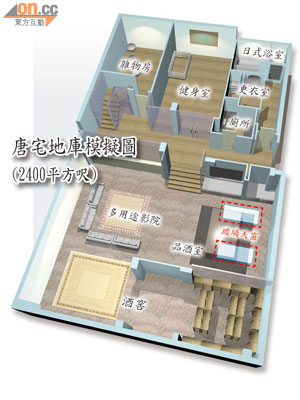







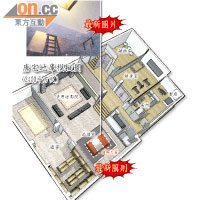

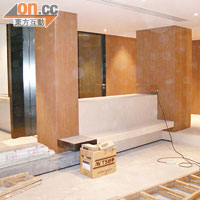
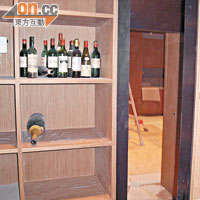
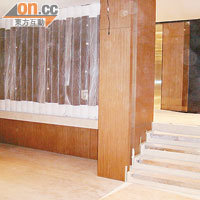














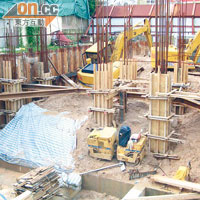
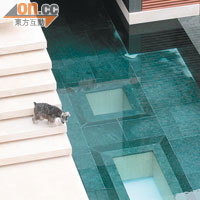


沒有留言:
張貼留言